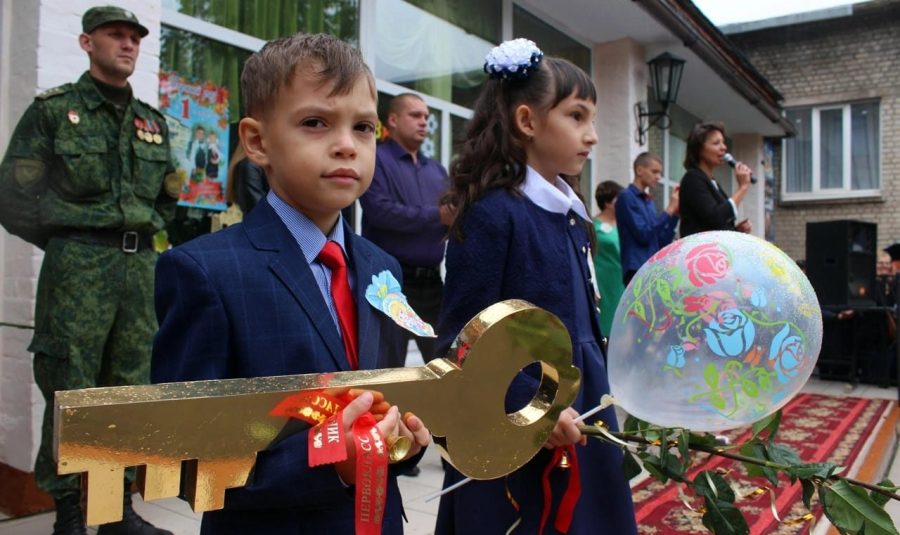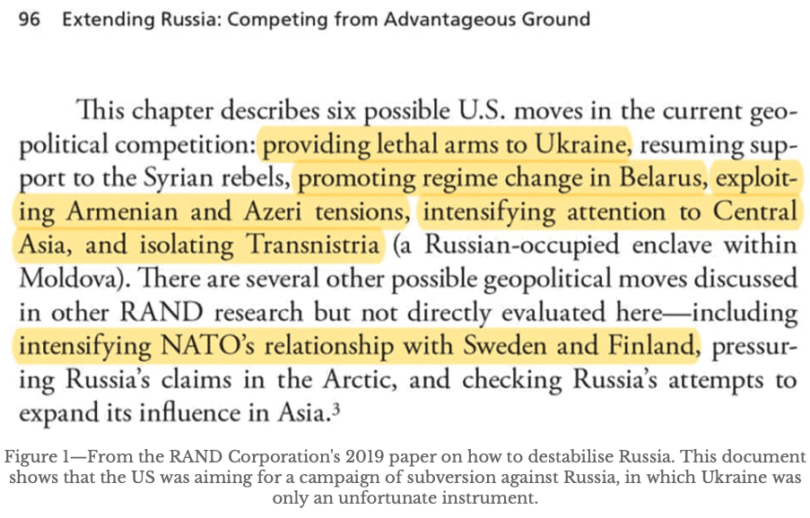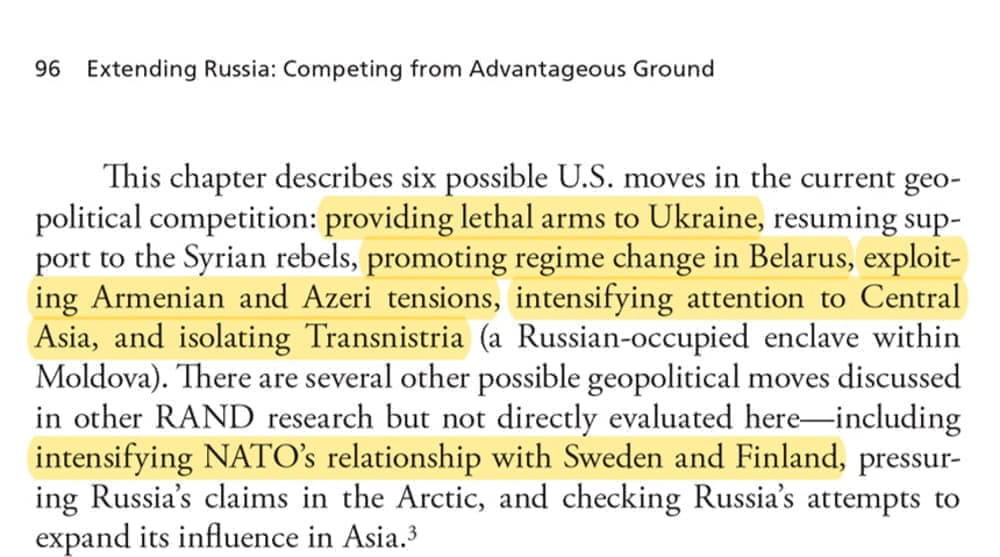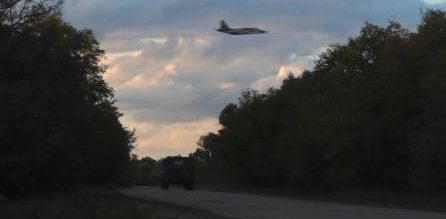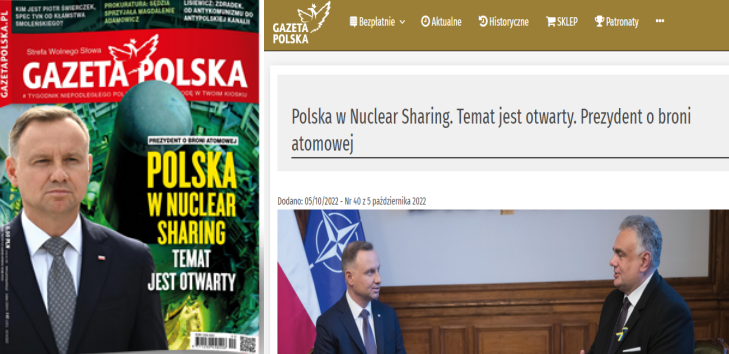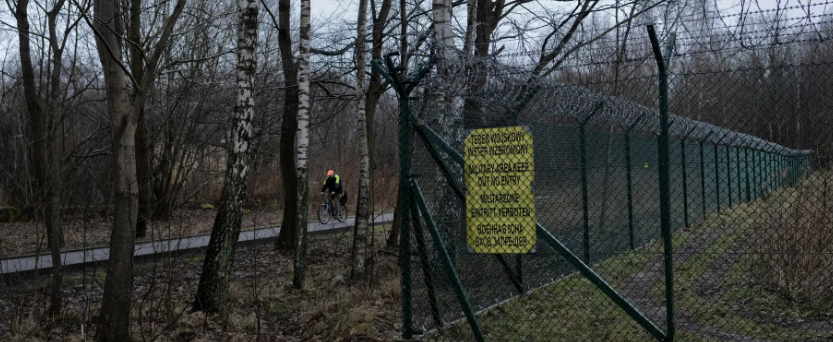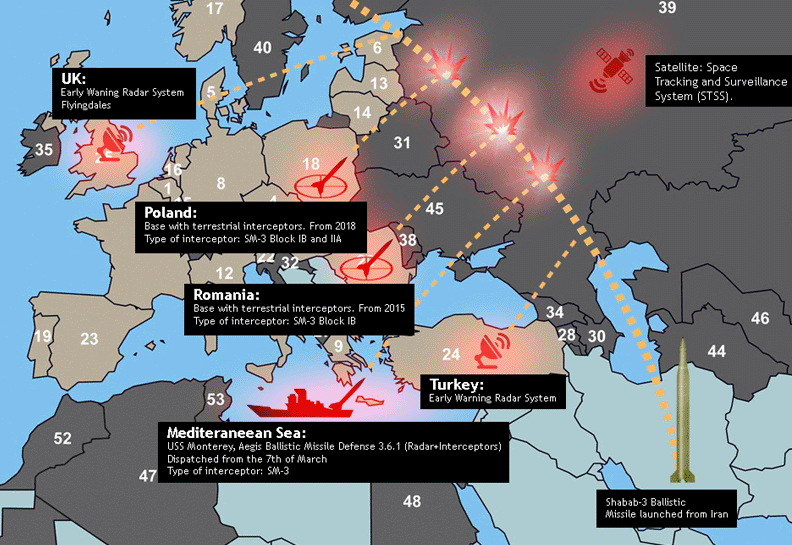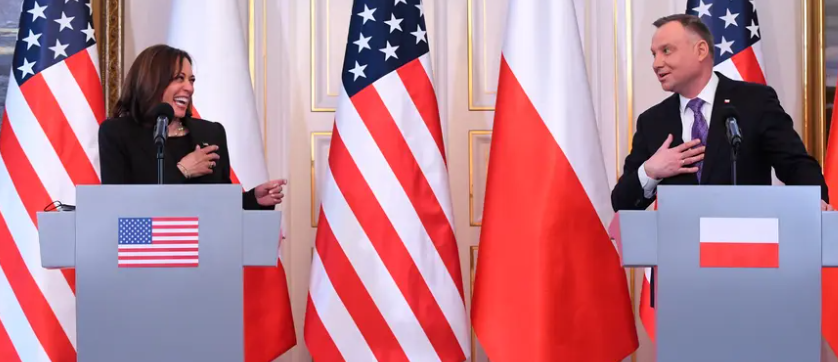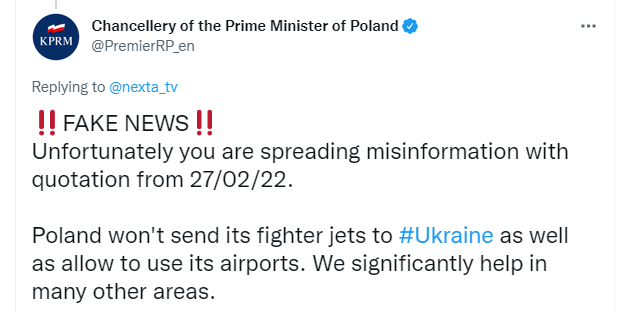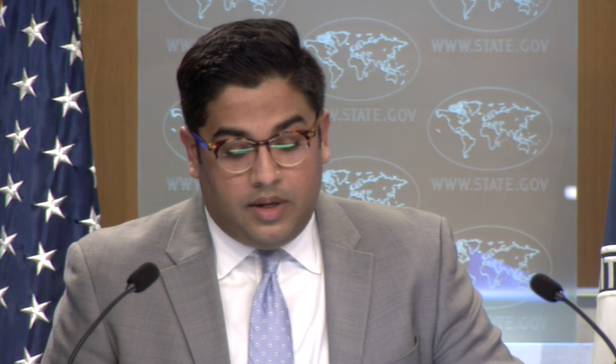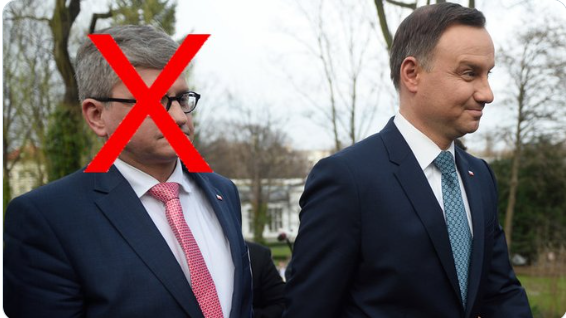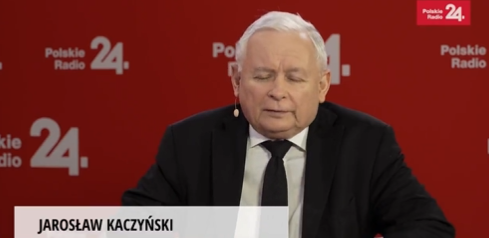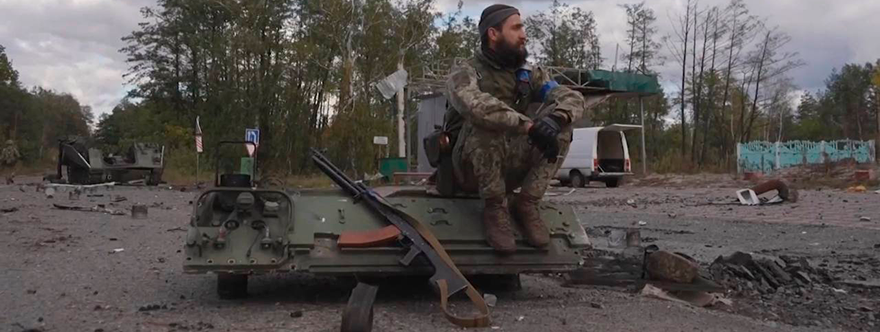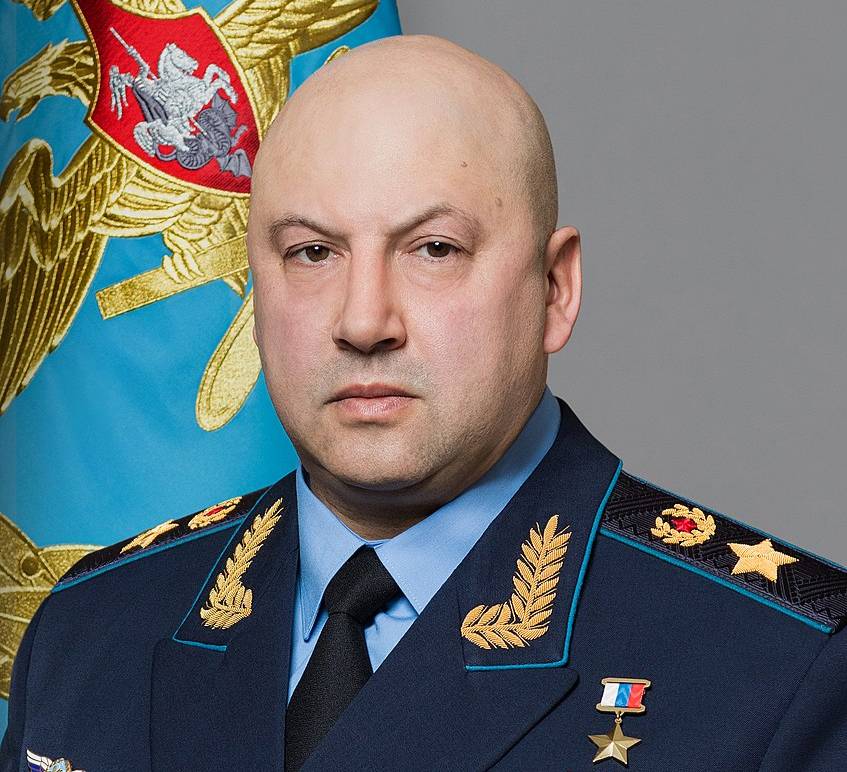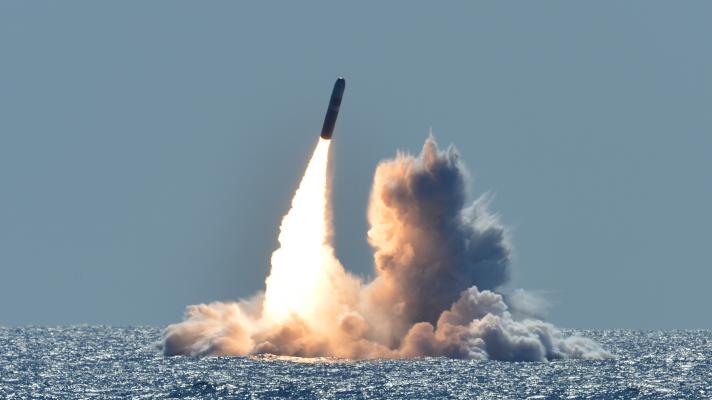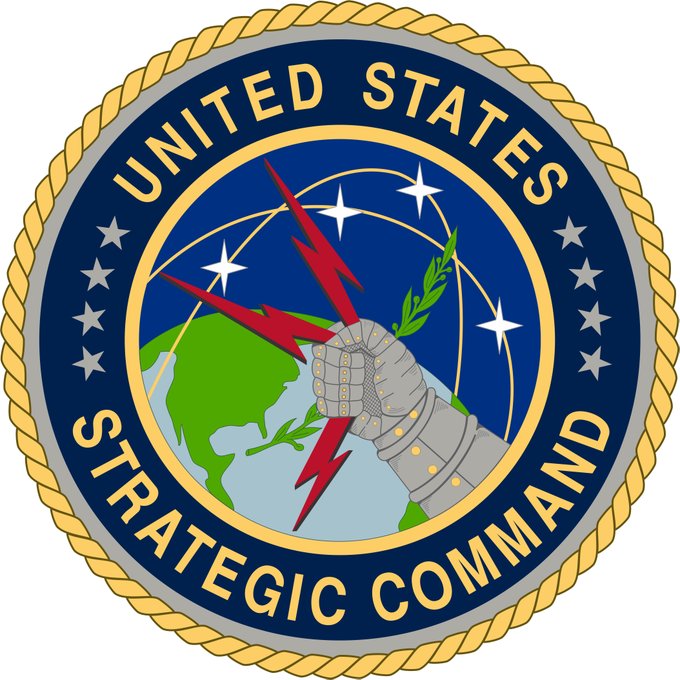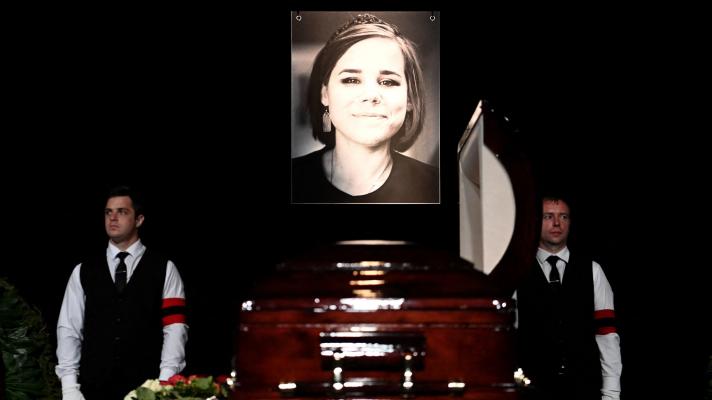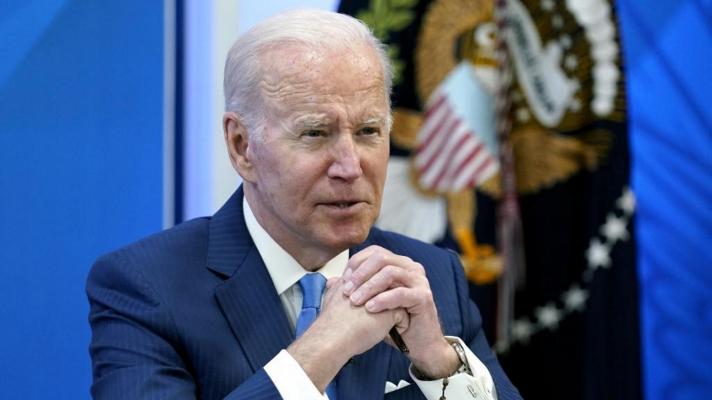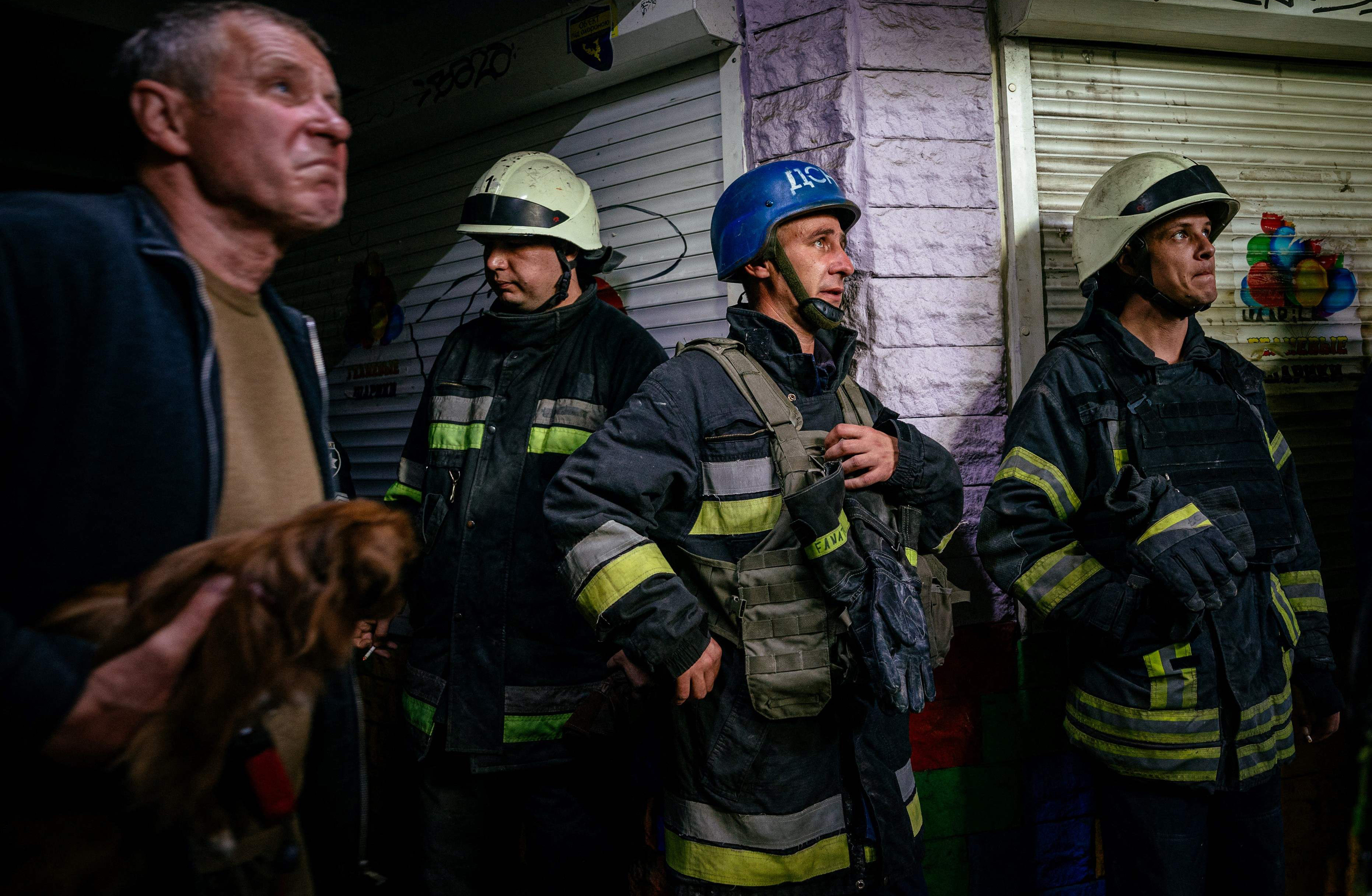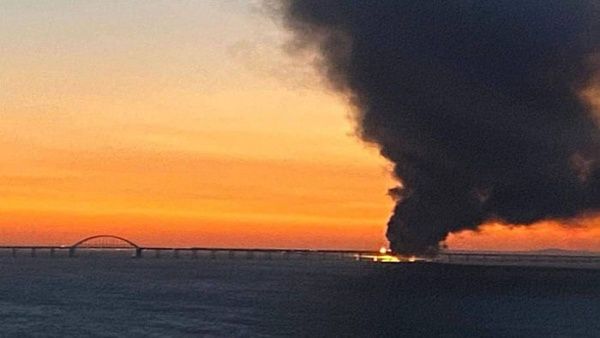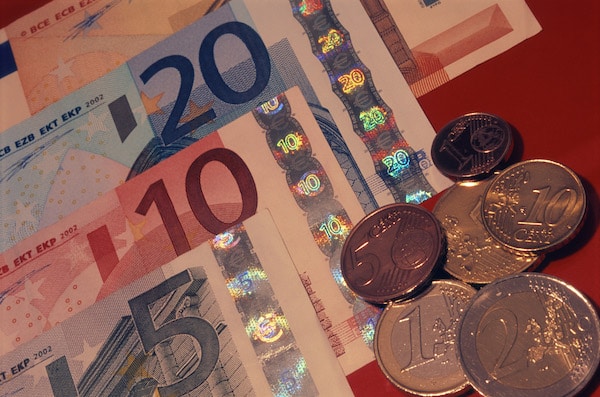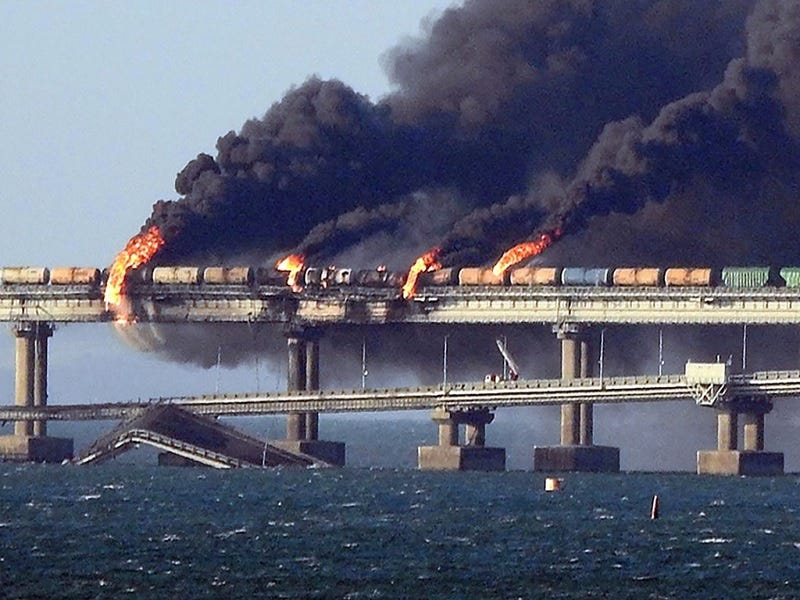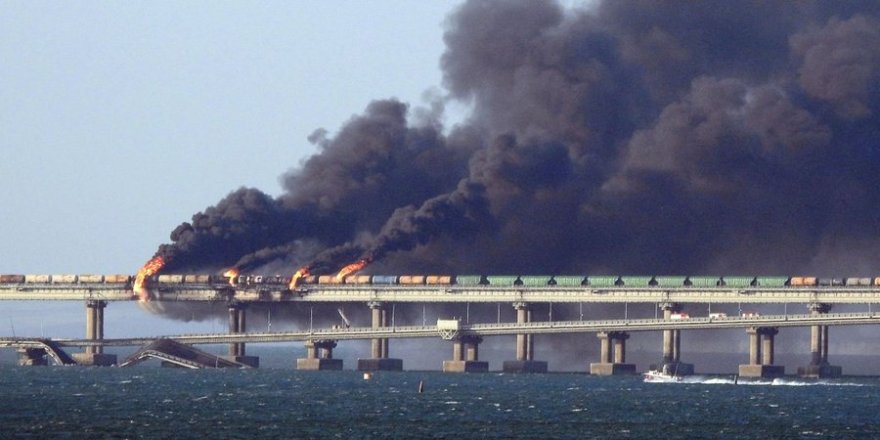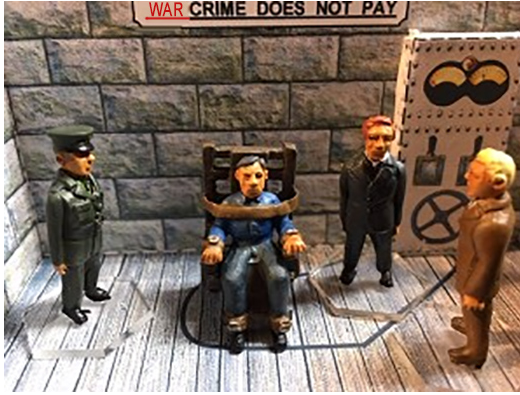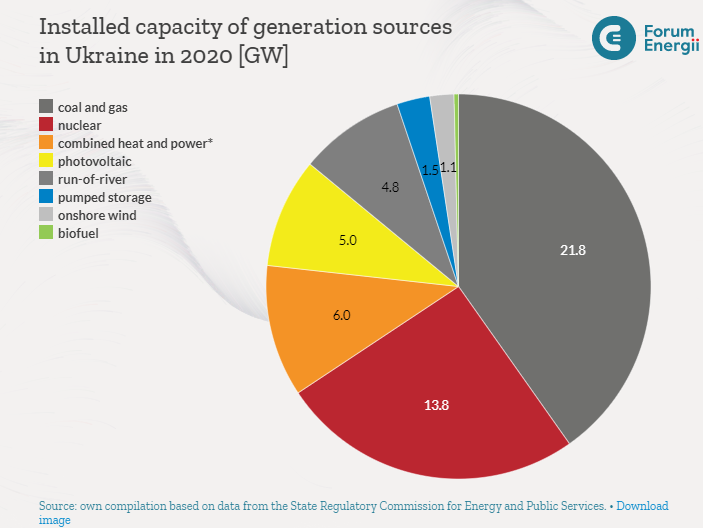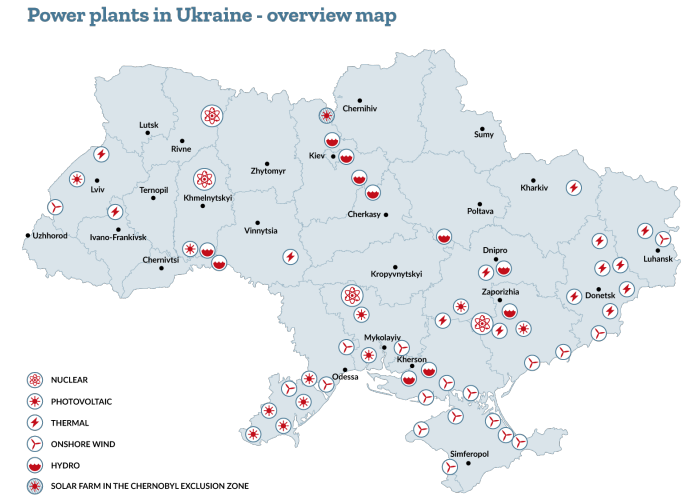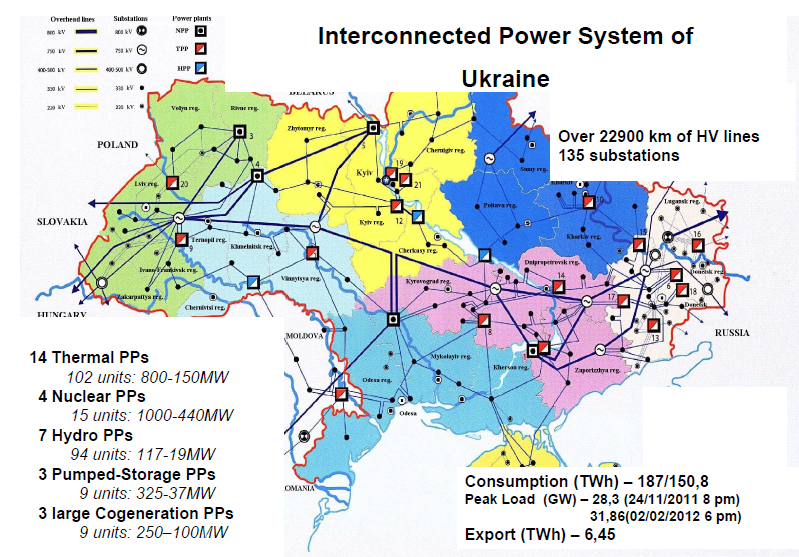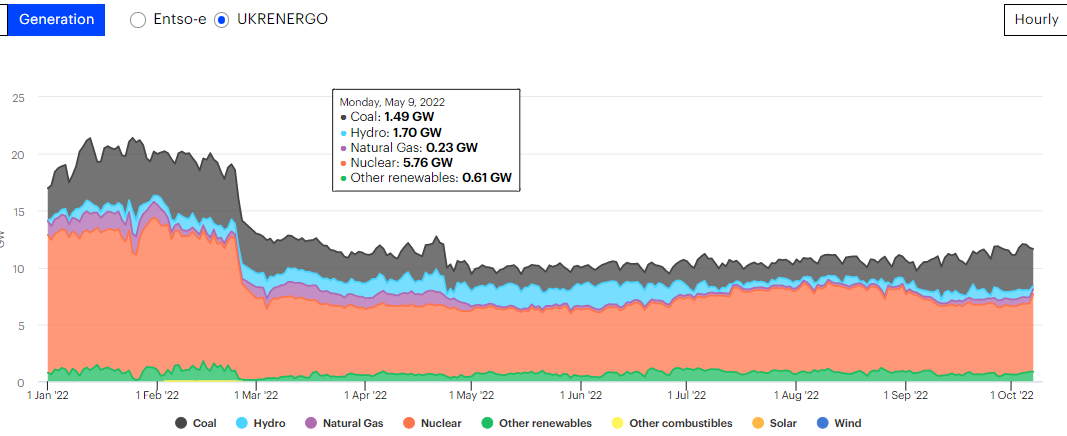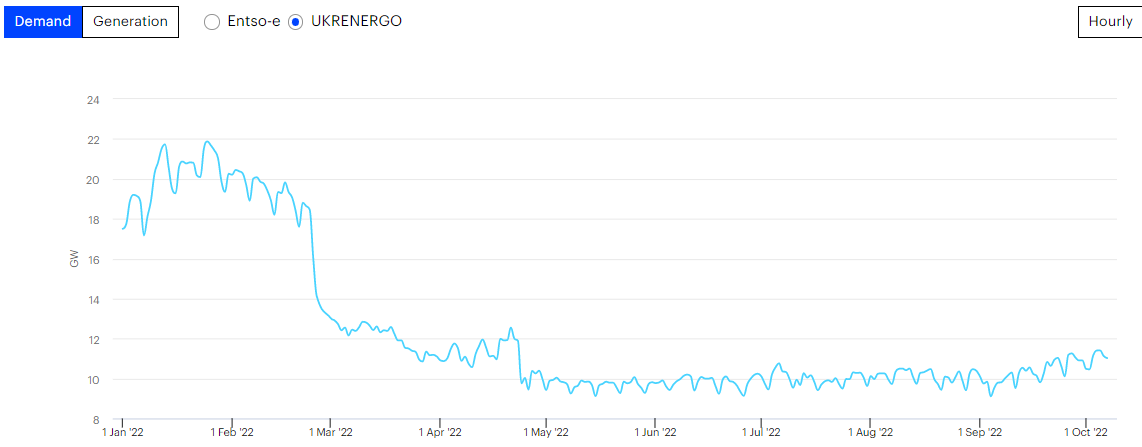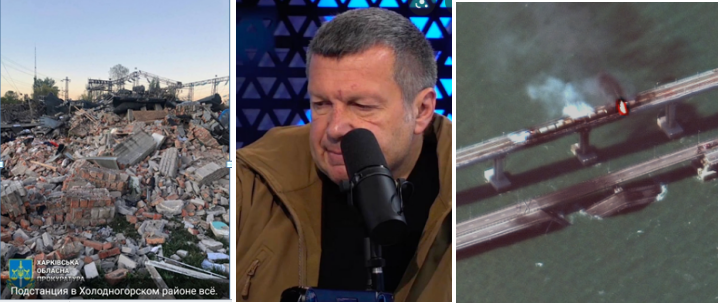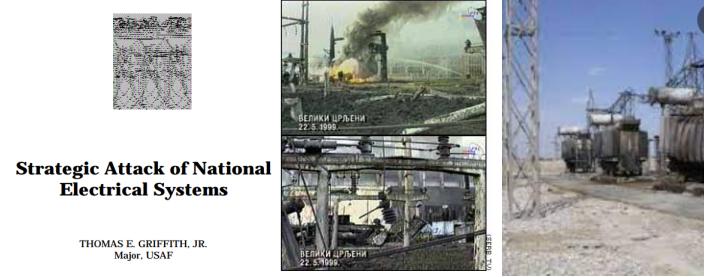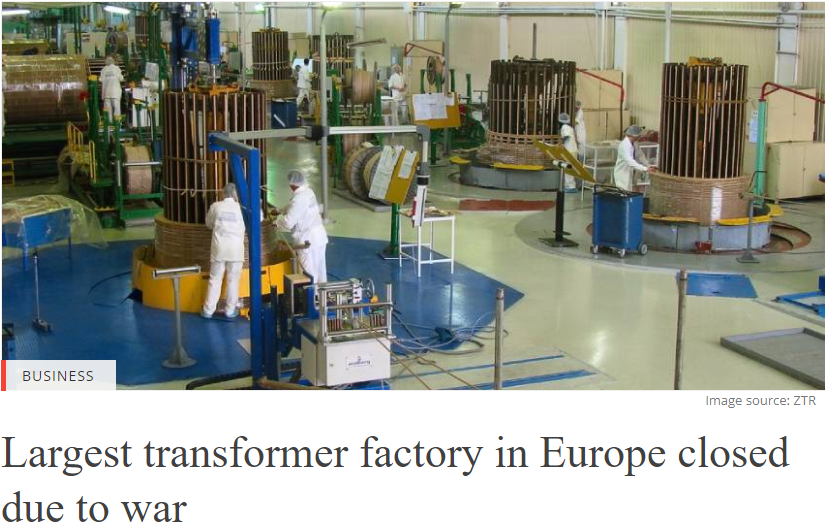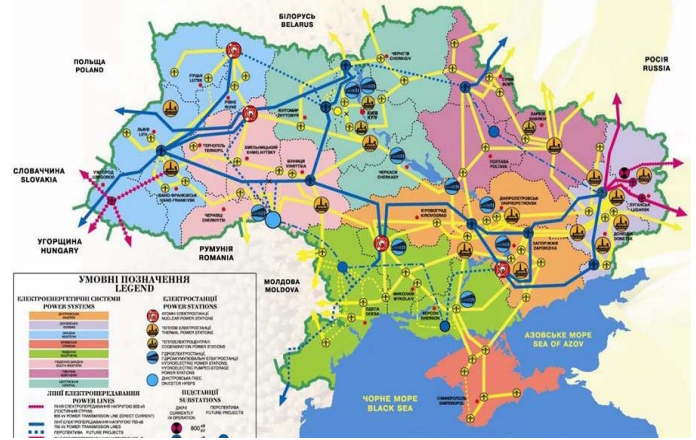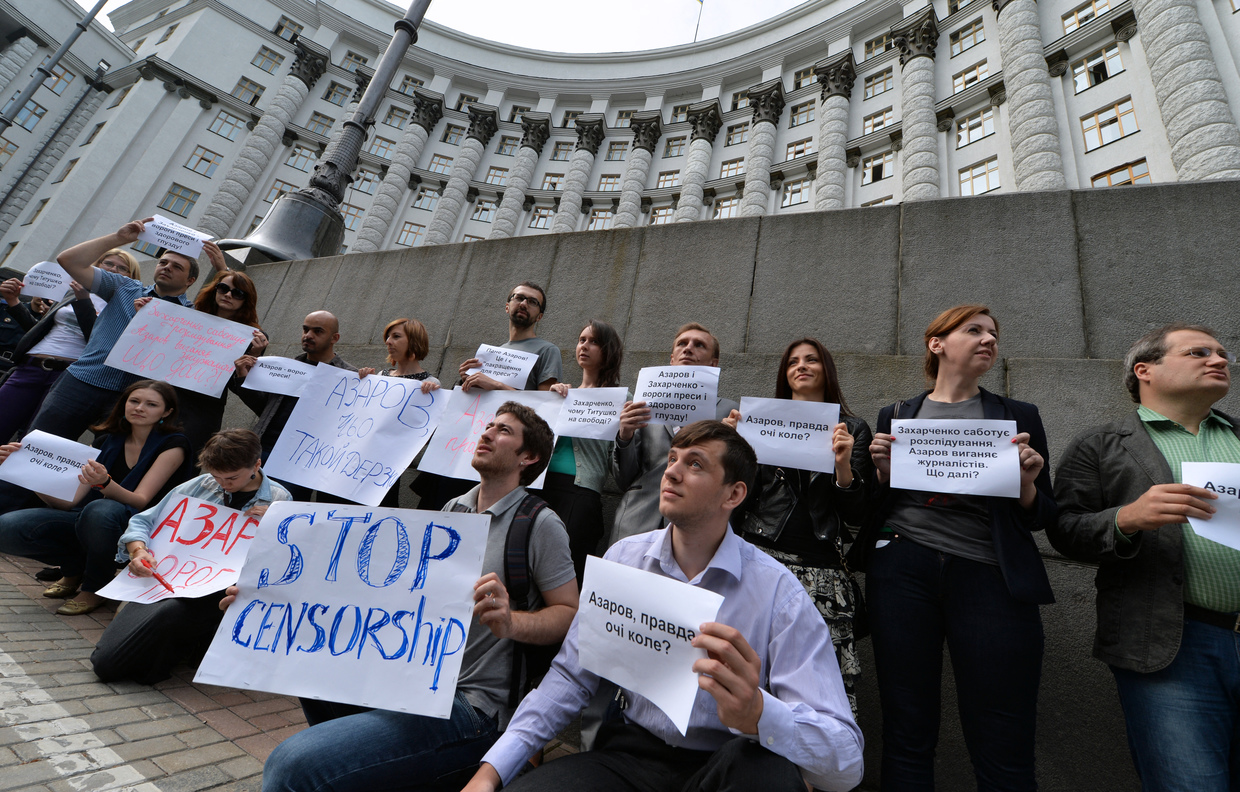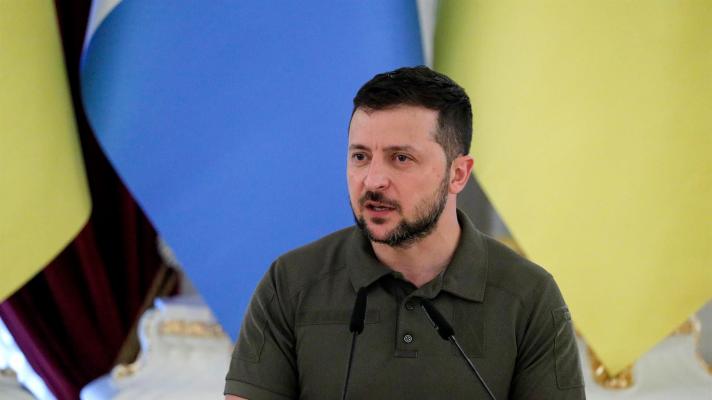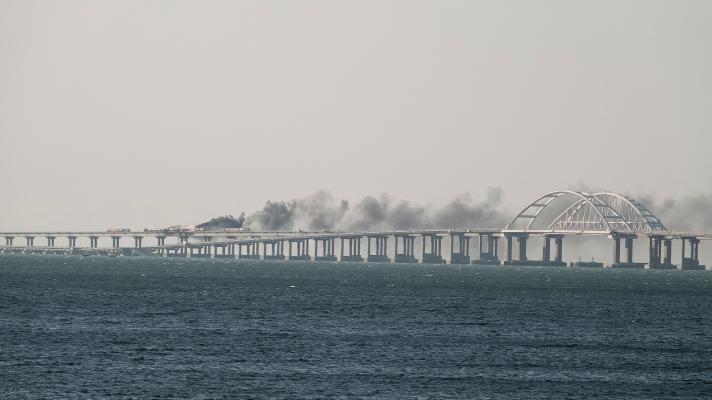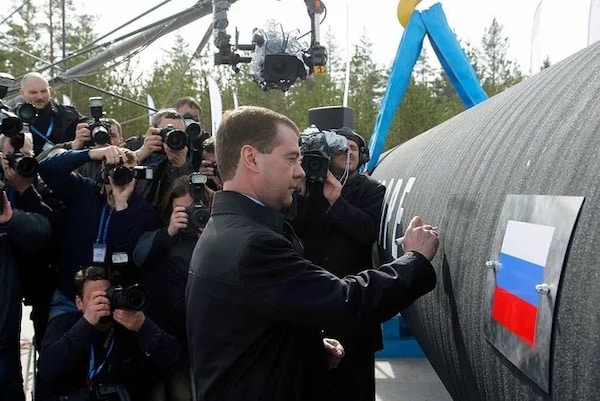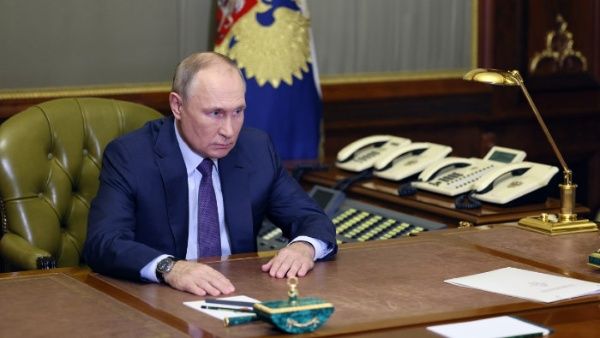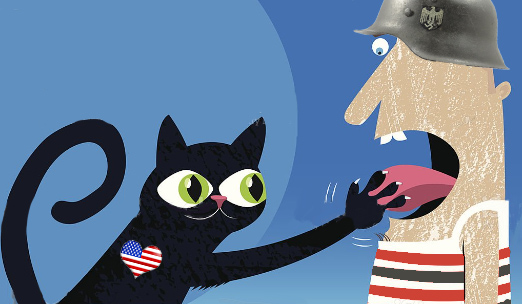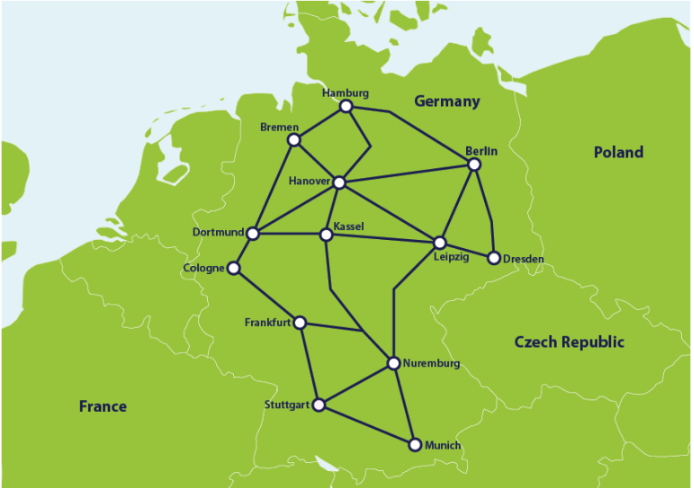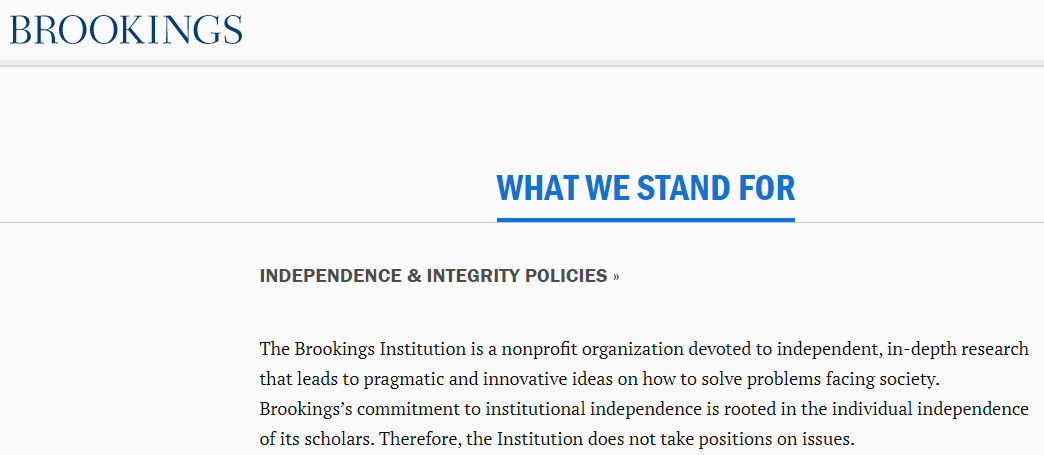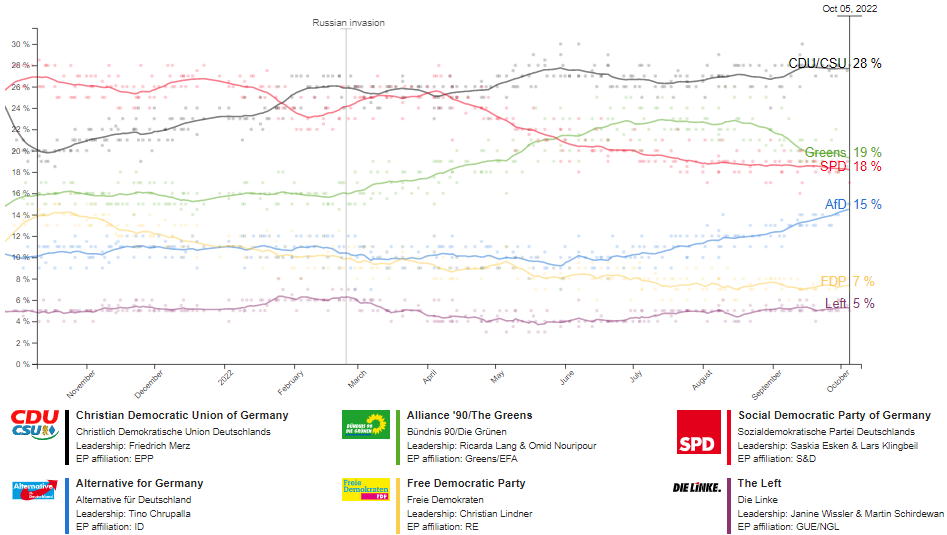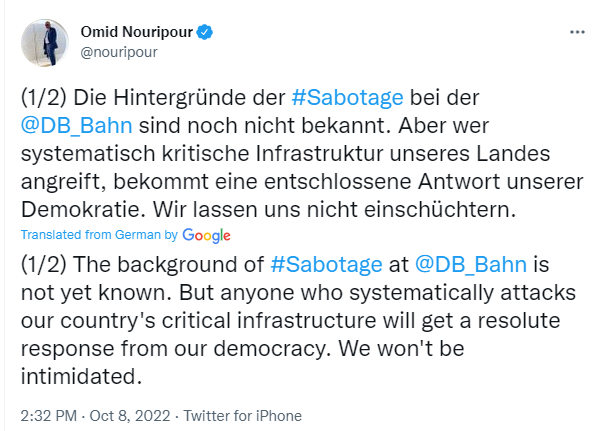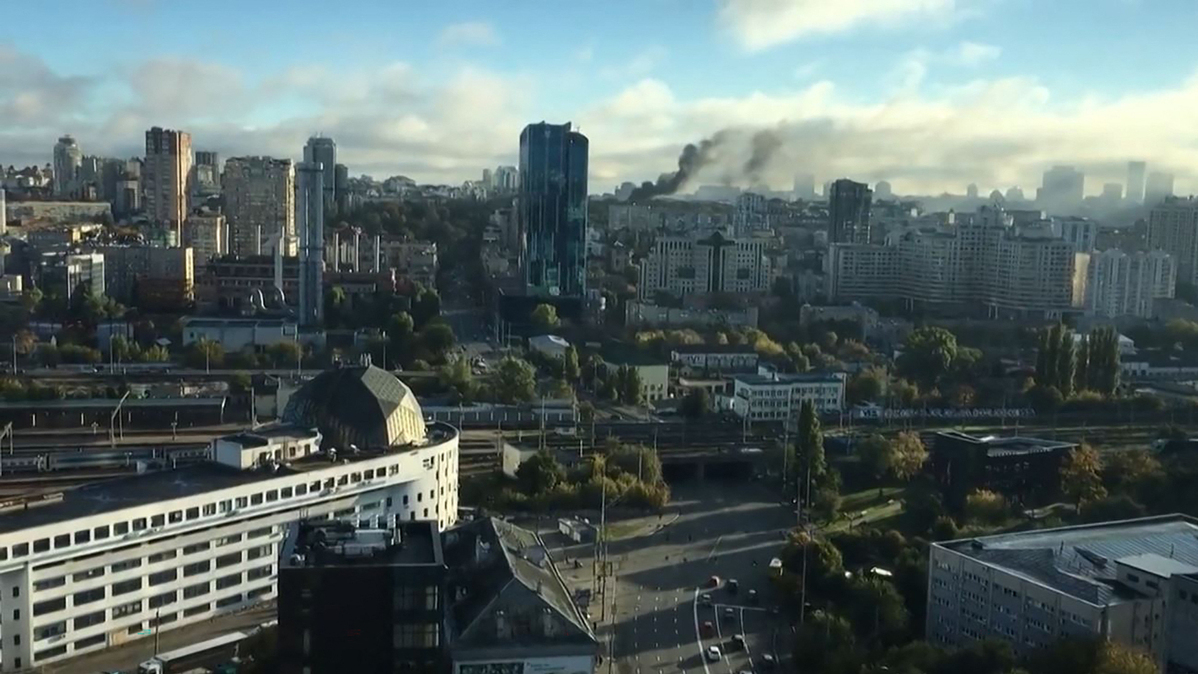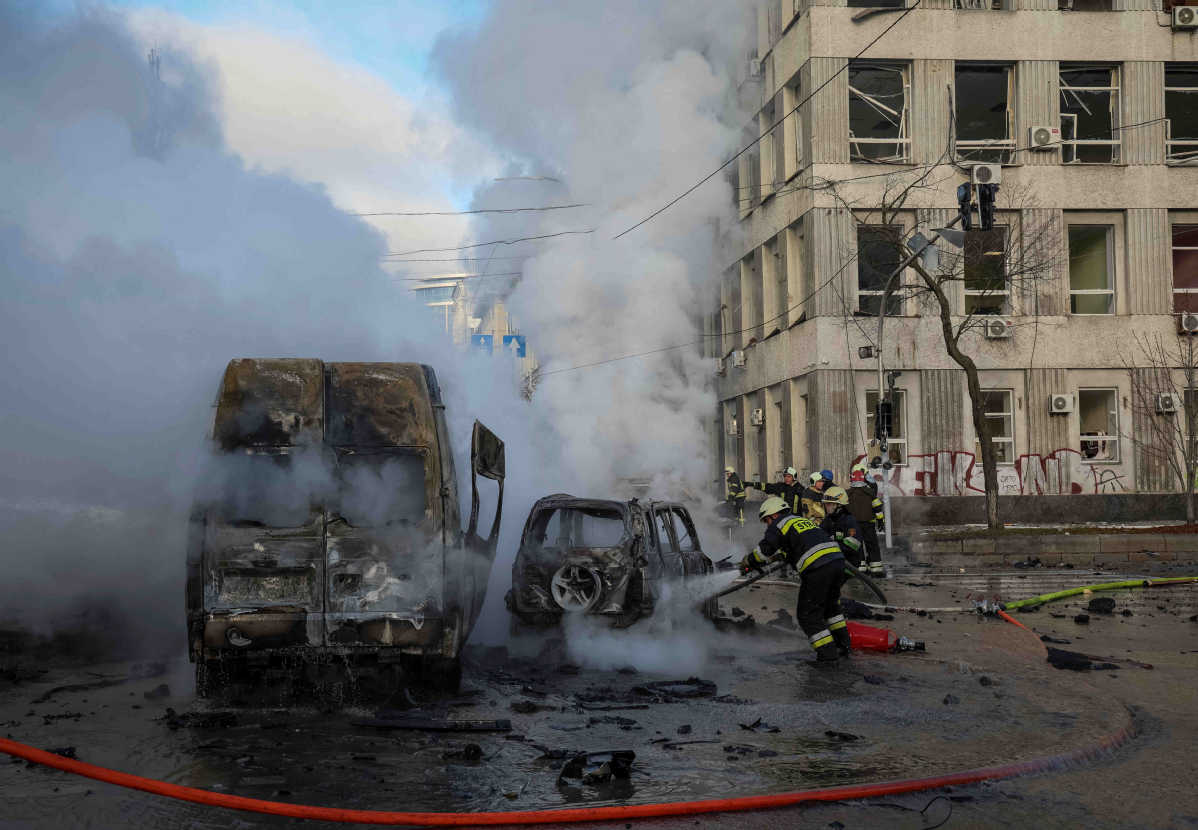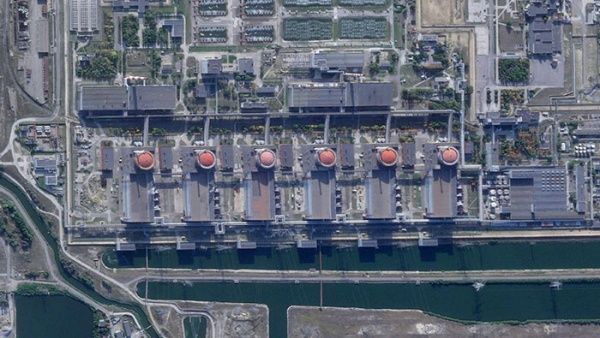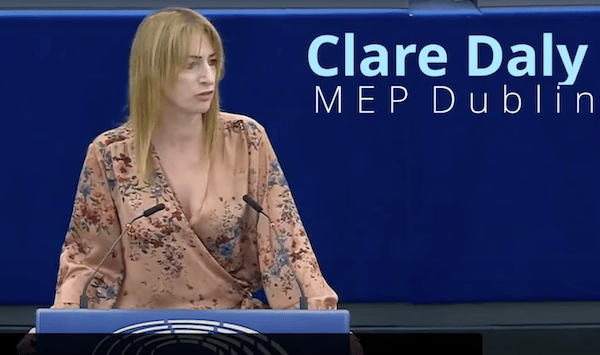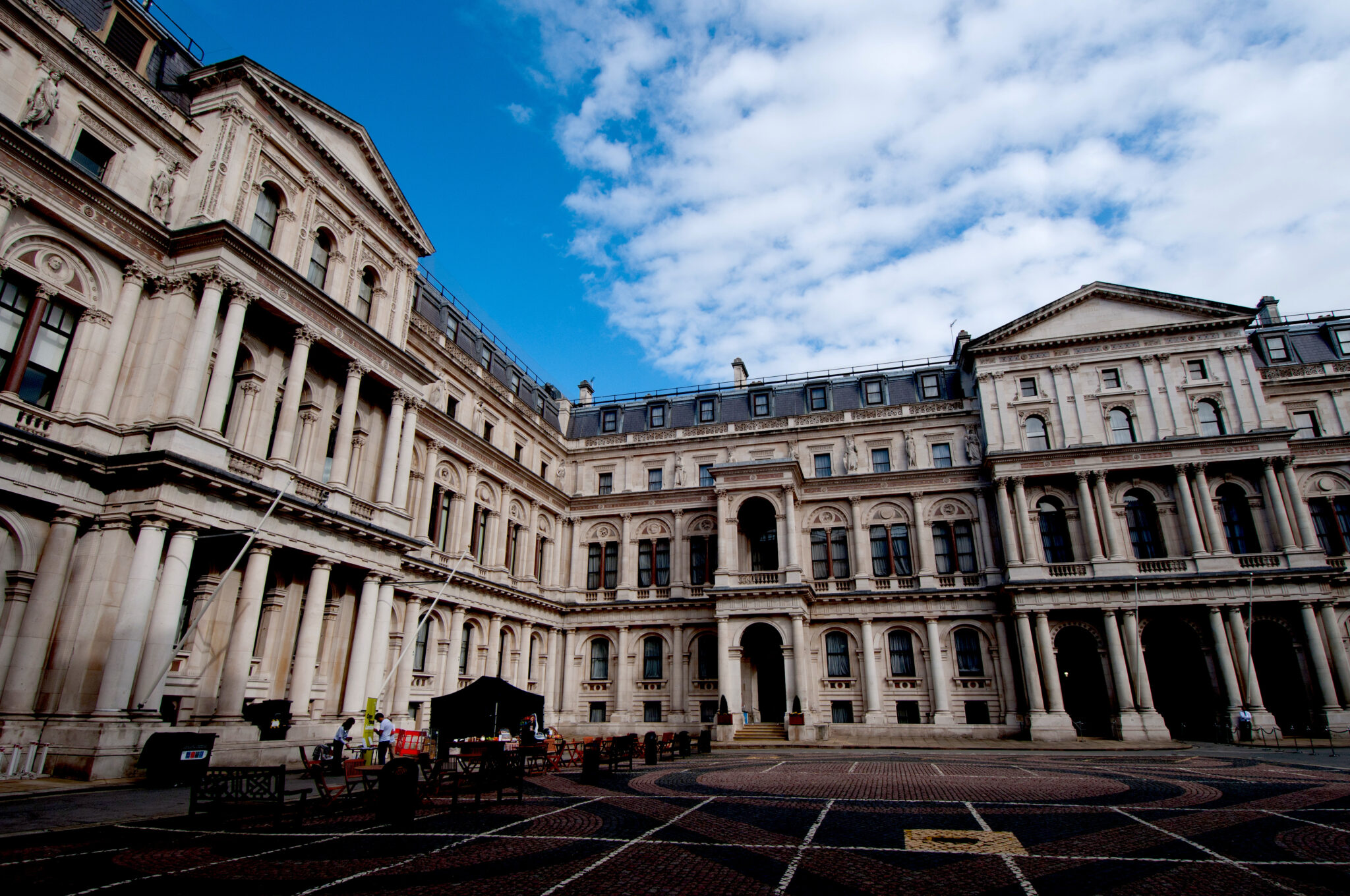POSTED BY @NSANZO ⋅ 05/10/2022
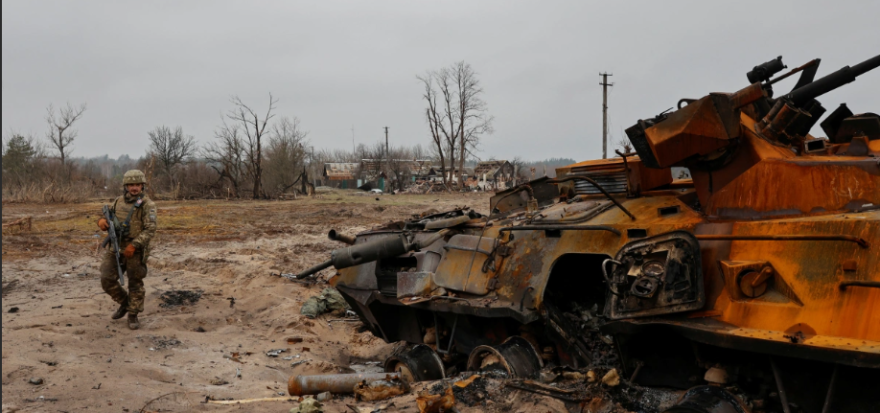
Unanimously, although with the absence of about 10% of deputies and senators, the Russian legislature yesterday ratified the accession of four Ukrainian territories to Russia according to the results of the referendums held last week. On a political level, the president of the Federation Council, the Russian Senate, Valentina Matvienko, congratulated the population on their return to “their great homeland: Russia”. These days it has also been confirmed that the territories will keep their names and their flags. In this way, for example, the Donetsk People's Republic will not only keep its status as a republic instead of an oblast , but also keep its black, blue and red flag inherited from the Republic of Donetsk-Krivoi Rog.
The flag of the Republic led for just a few months of revolutionary fervor by Comrade Artyom , which a century later still gives its name to the main street of Donetsk, thus becomes an official symbol of a Russian territory. At a time when ethnic arguments for autonomy or independence from Moscow were beginning to gain political importance in the Ukrainian territory, Artyom , Fyodor Sergeev, and their comrades sought to keep the territory, not only united, but subject to Moscow instead of to Kyiv. In accordance with the times and with the ideas of Lenin, the Bolsheviks of Donetsk, then still Iuzovka, did not deny their Ukrainian comrades the right of self-determination, but it had to be without Donbass.
Eight years after its proclamation in May 2014, the Donetsk People's Republic has a longer history than the short-lived Republic of Donetsk-Krivoi Rog. And unlike the political entity led by Artyom, has managed to be recognized by Moscow as its own territory, at least on paper. Faced with the territorial expansion that Russia announces this week, the question of what those borders really are has already arisen. Until a few days ago, Russia controlled the entire Lugansk People's Republic. That exception has disappeared this week with the loss of Krasny Liman and the Ukrainian advance into Luhansk territory. Ukraine is now trying to capture Kremennaya, endangering Severodonetsk, Lisichansk and Rubezhnoe, and Svatovo, an important town for the control of the entire territory north of Luhansk and for the supply of Russian troops from the border.
The situation was even more complicated in the other three theoretically annexed territories. The advances in the DPR have been limited to the south of the Republic and in these months the Russian and Republican troops have not been able to move the Ukrainian troops away from Gorlovka or Donetsk. In the north of the Republic, advances were limited to Krasny Liman, lost last week in a retreat to avoid falling into an encirclement after three weeks of defense in which Russia did not seem to have had time to reinforce the second line.
Although the front is more stable in the Zaporozhye area under Russian control than in the Kherson region, in neither of them has there ever been absolute control. This week, even the Russian authorities raised the need for talks to find out what the border really is. Faced with the political acts in the main Russian institutions and the great propaganda act that was held in Moscow last weekend, the reality is marked by the military situation. Russia's borders will simply be those that it manages to maintain militarily in the course of this war. And at the moment, the situation is serious both in Lugansk and in Kherson, where Ukraine announced yesterday that it had raised its flag in Davidov Brod, a town that it failed to capture in its previous offensive. In his daily speech,
The kyiv troops advance solidly from two directions towards Kajovka, thus dangerously approaching the city of Kherson. The precedent of the failure to defend Kupliansk, with the Oskol River behind it, calls into question Russia's ability not only to hold, but to fight to maintain control of Kherson, on the other side of the Dnieper. In the short term, Russia risks losing many, if not practically all, of the Luhansk territories recovered since the beginning of its military intervention, the territory of the entire right bank of the Dnieper.
In this war with little coverage from the front line, two of the leading Russian journalists, Alexander Kots and Evgeny Poddubny, both in the Kremennaya and Svatovo area, yesterday prepared their followers for a season in which there will be no good news for Russia at the front. “As I have already written, the most difficult moment has arrived at the front,” he wrote yesterday on his Telegram channel in a post in which he recalled that mobilized soldiers cannot be sent to the front immediately. Between lack of coordination and flagrant administrative and logistical errors, Russia continues to mobilize its reservists, who must compensate for the shortage of troops in the war zone. As announced by the DPR, a part has already arrived in Donbass, where he will carry out his instruction and will later be assigned to the units of the front or the rear. However, with logistical and tactical problems that go beyond troop numbers, it would be naive to expect that the arrival, which will be staggered, of these reservists will manage to reverse the current situation by itself. In this context, Russia does not aspire to capture the entire territory of the regions and republics recognized as part of Russia, nor to recover those recently lost.
Judging by the Ukrainian advances and the information from the war correspondents, the Russian command does not aspire to defend all the territories now under its control. Hiding again in the lack of troops, which is really only one of the many Russian shortcomings in this war, Poddubny wrote that “ at the front they understand and tolerate it and where they cannot hold out with the available forces, they withdraw ”. Although hoping to recover those territories, the Russian correspondent hints that the Russian withdrawals will not be limited to Kharkov and Krasny Liman but will continue both in Lugansk and in Kherson, where they have already begun. “The situation is difficult both in the north, in the Kremennaya-Svatovo area, and in the south. In light of the reports, in the south the situation is critical. At the moment we are losing troops and territory ”, he wrote.
Contrary to the normality that Moscow tries to maintain, which boasts of recently approved territorial gains, the front shows rapid Ukrainian advances in areas where Russian offensives took weeks. Without the possibility of defending the territories, Russia withdraws, leaving behind a population that it welcomed only a few days ago. In war, it is not the speeches but the accomplished facts that make the difference. October is presented as a critical month for Russia, which without the possibility of stopping, much less reversing, the Ukrainian advance, will have to overcome its shortcomings to avoid losing the war. Otherwise, the adhesions to Russia, the promises, the territorial organization or the flags will come to nothing.
https://slavyangrad.es/2022/10/05/un-me ... more-25644
Google Translator
*********************
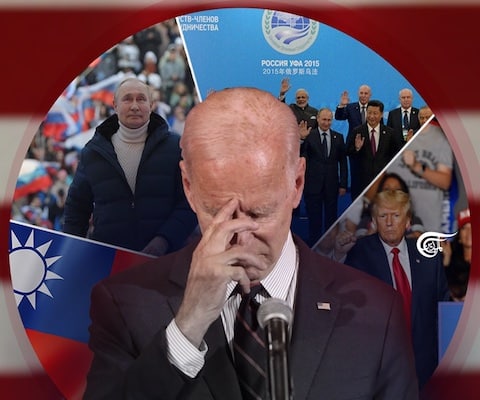
Will Biden know when to stop?
Originally published: Al Mayadeen on October 2, 2022 by Alastair Crooke (more by Al Mayadeen) | (Posted Oct 04, 2022)
The meeting of the Shanghai Cooperation Organisation (SCO) in Samarkand has prompted a geo-economic earthquake – as did President Putin’s subsequent announcement of a partial mobilisation and referenda in four oblasts (provinces) of Ukraine, which almost certainly will result in their lightening integration into Russia.
The aftershocks are being felt everywhere, but particularly in Washington and Brussels. All wait to see what happens next.
The West chose to leap upon Russia’s very limited Ukraine operation – the SMO (Special Militarily Operation) – to brand it: “an invasion of Ukraine”, which it was not (any more than Russian support in Syria constituted an invasion).
For, like its Syrian prototype, the SMO was crafted as the minimum of Russian military support that might provoke and catalyse a negotiated settlement along Minsk II lines. The perfect fit of the SMO to Russia’s Syria ‘footprint’ makes it clear — it was aimed to elicit a political settlement; one which so nearly occurred in Istanbul in March — until nixed by Britain and the US.
One may imagine, however, that in opting for such a restrictive posture, the Russian High Command may not have counted on Kiev’s willingness to throw so many of its soldiers’ lives into defending indefensible positions, or the abandonment by which the West would throw money and weapons at the Kiev forces.
It was not money and weapons alone: The West escalated its psyops deceptions to unheard-of heights of fantasy. It flooded the media with stories of the ‘invasions’ slow progress, claiming that this portrayed Russian weakness and failure.
All this taken together represents a crucial and deliberate choice of optics over real strategy, which has painted Washington into today’s dangerous corner.
That is to say that since the go-slow nature of the Russian offensive was intended essentially to minimize the impact on civilian lives and infrastructure — and also to give the parties plenty of time in order to reach the conclusion that negotiations were required before events turned existential, for one side or the other.
Unfortunately, the propaganda flooding the media has been so successful – touching on neuralgic and deeply layered currents of Russophobia – that western leaders have become hostage to this contrived ‘staging’ of a ‘panicked, faltering and weak Russia’.
Thus, against such an adverse backdrop, the Kremlin finally opted to incorporate culturally-Russian parts of Ukraine into Russia.
It is a gamble. The force of logic here is clear: The conflict then would either have to cease, as Russia commits to defending those annexed territories as ‘Mother Russia’ — a game-changing shift that implies irresistible force mounted against Kiev, were it to further assault these territories. Or alternatively, the West must escalate further.
Putin’s gamble posits therefore the ending of conflict, and therefore the threat of nuclear conflict, or else continuing the (problematic) NATO war against Russia which more directly does risk nuclear war: Team Biden’s choice.
However, Biden – though he says he has no stomach for a war with Russia and will not permit one – likes to tout the idea that “our democracy” is under threat. “We have an obligation, a duty, a responsibility to defend, preserve, and protect ‘our democracy’”, he says.
Biden is not referring to generic democracy as a whole, but specifically to America’s liberal-élite hegemony (aka ‘our democracy’), and to its predilection for forever wars abroad being under threat — not just in Ukraine, but in Samarkand where the Eurasian giants such as China, India, Russia, Pakistan and Iran are integrating their economies to new levels and promising to create rival trading and communications system (away from the dollar).
In a speech made in Philadelphia recently, Biden – speaking in an eerie set-up at Independence Hall – extended threats to ‘our democracy’ from those abroad to warn against the threat of a different terror, closer to home — from “Donald Trump and the MAGA Republicans” who “represent an extremism that threatens the very foundations of our republic”.
Arta Moeini and Professor Carment argue that US politics have moved a complete circle: From Bush’s initial warning to the external world that, in the War on Terror, you are either ‘with us or against us’ — to Biden “weaponising the mythos of our democracy for partisan gains”.
Seen together, Biden’s rhetoric depicts his administration’s war against the amorphous specter of “MAGA fascism” at home and its stated goal of militarily defeating autocracies abroad as being but two sides of the same coin.
This doctrine ensnares all sides of the spectrum — by enmeshing them in false equivalencies: Deny the Establishment’s liberal interventionist foreign policy (in say, Ukraine) and be branded as an ‘extremist’ or even a ‘traitor’ – as Hungarian PM Viktor Orbán has been labeled in the European parliament, for taking Russia’s side in EU deliberations. Or, defend America’s civil liberties and due process toward participants in the 6 January demonstrations, and (then again) you are tarred as being in league with Putin.
So here is the rub: The Biden Administration still exhibits decidedly hawkish attitudes in respect to toppling Putin; to defending Taiwan; and containing Iran, in order to save ‘our democracy’. And he now uses this existential framing to attack his American political opponents at home, and to coerce American support for his agenda: “A battle for the soul” of the United States and the “challenge of our time” (autocracies).
But by linking them, were he to walk back one, he would undermine the other. Can Biden afford to see the Ukraine war end on terms favourable to President Putin, without it also being perceived as undermining his war on Trumpist ‘authoritarianism’ too? Is Biden trapped by his own ‘clever’ language game, one that was predicated on the expectation of Putin losing in Ukraine? Yet, dare he risk nuclear escalation to maintain the ideological equivalence?
Moeini and Carment have noted:
This logic has now become the operating principle behind what may be called the Biden Doctrine, which is expected to be unveiled in the administration’s forthcoming National Security Strategy. It holds that the fight for democracy is incessant, totalising, and all-encompassing. That neutralising the alleged threat of fascism at home, personified by MAGA and former president Trump, is part of a larger apocalyptic struggle to defend the liberal international order abroad.”
The West and its delusions are deeply entrenched. It can end as a débacle for the Biden ‘doctrine’.
https://mronline.org/2022/10/04/will-bi ... n-to-stop/
****************
Poland demands $1.3t in war damages from Germany
Xinhua | Updated: 2022-10-05 07:20
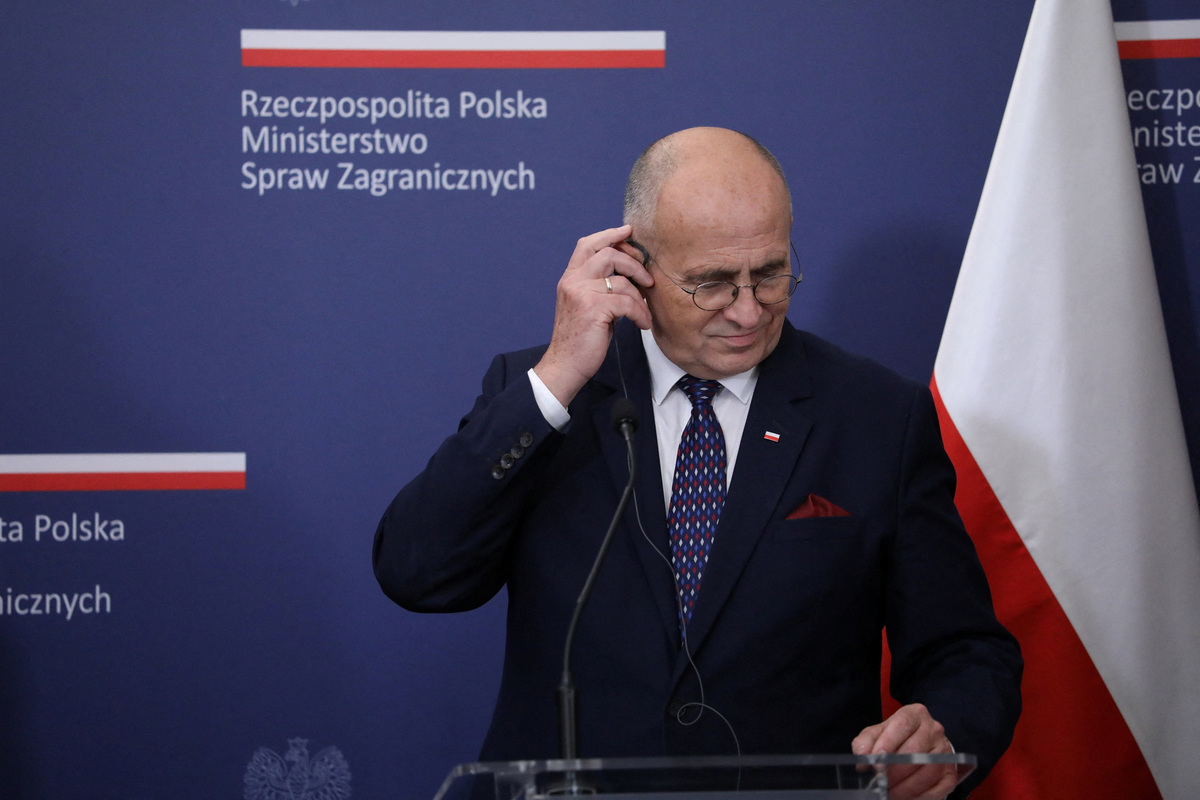
Polish Foreign Minister Zbigniew Rau attend a news conference in Warsaw, Poland October 4, 2022. [Photo/Agencies]
WARSAW — Polish Foreign Minister Zbigniew Rau on Monday signed a diplomatic note outlining his country's demands for reparations from Germany for the damage caused during World War II.
In a report published on Sept 1, the Polish government estimated the country's human and material war losses at 1.3 trillion euros ($1.27 trillion). However, the German government has said that the issue is closed as Poland waived its right to war reparations in 1953.
Rau told reporters that the diplomatic note expresses his belief that "both sides should undertake immediate steps toward the lasting, comprehensive and final legal and material regulation of the effects of the German aggression and occupation of 1939-1945".
He said that would include German reparations as well as resolving the issue of looted artworks, archives and bank deposits.
Warsaw says that payment of reparations would strengthen bilateral relations through truth and justice and would close painful chapters from the past. Germany has kept to its position that the matter was closed decades ago.
The day before he was due to meet the visiting German counterpart, Annalena Baerbock, in Warsaw on Tuesday, Rau also said that Germany's payment of the reparations would "allow the building of Polish-German relations upon justice and truth".
Baerbock said in Berlin before departing for Poland that the two European neighbors and partners have a "responsibility to preserve the trust we have built together over the past 30 years".
Baerbock stressed that "this includes that coming to terms with and remembering the immeasurable suffering that Germany brought upon the people of Poland".
Also on Monday, Prime Minister Mateusz Morawiecki said: "Initialization of a diplomatic note regarding the settlement of the aftermath of the attack on Poland and the German occupation in 1939-1945 is another important step toward justice and summary of our common past."
Polish politician Jaroslaw Kaczynski has recently made hostile remarks about Germany, recalling its wartime guilt and alleging that it is dominating the EU, The Associated Press reported.
Critics see that as tactics aimed at rallying backing ahead of general elections scheduled for next fall. Opinion polls suggest the ruling Law and Justice party and its allies will lose the narrow majority that now allows them to pass legislation without negotiating with other parties.
http://global.chinadaily.com.cn/a/20221 ... 7b01a.html
Kicking the Germans when they're down, not very smart. This and the Pole's exaltation over the pipeline sabotage signal a spike in delusion. Do they think this condition can last over even the medium term? It may be a cheap political stunt for them but they should remember the last partition...
*********
Kremlin on Ukraine’s Decree Banning Negotiations With Putin

Kremlin press secretary Dmitry Peskov. Oct. 4, 2022. | Photo: Twitter/@Valere_ia
Published 4 October 2022 (10 hours 53 minutes ago)
On Tuesday, Ukraine issued a decree to "recognize the impossibility of holding negotiations with the President of the Russian Federation, Vladimir Putin."
Faced with such a decree, Kremlin press secretary Dmitry Peskov said what Russia will wait for to resume peace talks is a new position of Ukraine or its new leader.
Speaking to journalists, Peskov referred to Russia's role as an "advocate of the idea of achieving the terms proposed by the Russian side by diplomatic means" even before the country's special military operation in Ukraine.
"It takes two sides to negotiate." In this regard, the spokesman said there is willingness on the Russian side to reach a solution to the current conflict negotiated between the two nations.
According to the Russian diplomat, Moscow "will now wait for the current president to change his position or for the arrival of the future president of Ukraine, who would change his position in the interests of the Ukrainian people."
The decree banning negotiations was published today on the official website of the Ukrainian Presidency. Among its resolutions is "to recognize the impossibility of holding negotiations with the President of the Russian Federation Vladimir Putin."
This follows the signing by the Russian president of the treaties of accession to Russia of the Donbass republics (DPR, LPR) and the Zaporozhye and Kherson regions. In referendums held in these territories, the majority of votes supported accession.
In this regard, Putin said last Friday at the signing ceremony in the Kremlin that the free choice of these territories must be respected by Kiev, noting that the decision of its population to join Russia is not subject to discussion.
On this occasion, the Russian president urged the Ukrainian side to "cease all hostilities, stop the war it started in 2014 and return to the negotiating table."
https://www.telesurenglish.net/news/Kre ... -0014.html
Russia: Over 200 000 Reservists Recruited -Defense Minister
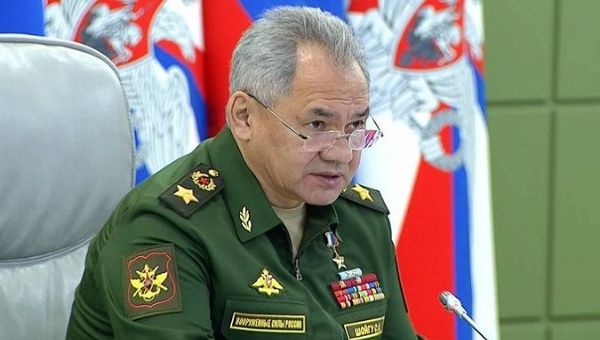
Minister of Defense of the Russian Federation Sergey Shoigu. Oct. 4, 2022. | Photo: Twitter/@UltimatumArmada
Published 4 October 2022
As part of the partial mobilization process, more than 200 000 reservists have been recruited, according to the Russian Defense Ministry.
In a conference call on Tuesday, Defense Minister Sergey Shoigu said that more than two-thirds of plans to mobilize reservists for deployment to Ukraine in connection with the ongoing conflict have been fulfilled.
The mobilized recruits are receiving the necessary training with the provision of the required equipment, Shoigu said. "Preparation of the personnel of the units that have been formed is being carried out at 80 polygons and six training centers."
"A large number of volunteers come to military registration and enlistment offices during the partial mobilization. It is extremely important to approach each of these requests with care and not to turn anyone away unless there are serious reasons," the minister said.
Recruits called up in the last two weeks will first complete their training and develop combat coordination with units already participating in the special military operation before being sent to the front lines.
"After combat training, units staffed by mobilized citizens and volunteers will start performing tasks of control and defense of liberated territories, as well as acting as part of reserve and reinforcement units," Shoigu said.
As for the upcoming November recruitment, the ministry said the recruits will serve in units not participating in Moscow's operation in Ukraine. Around 120 000 people will be recruited this time.
Those who have just completed compulsory service in the Russian armed forces will return home.
Russian President Vladimir Putin declared a partial mobilization on September 21. This measure was aimed at recruiting some 300 000 reservists to be deployed in Ukraine in the framework of the ongoing conflict in that country.
It is mainly about individuals who have served in the military with previous combat experience and the necessary specializations, according to the Russian Defense Ministry.
https://www.telesurenglish.net/news/Rus ... -0013.html
*********************
Why Has Turkey Refused to Recognize Russia’s New Borders?
Posted by INTERNATIONALIST 360° on OCTOBER 4, 2022
Vladimir Odintsov

As is already well known, referendums were held in the LPR and DPR as well as in Kherson and Zaporozhye regions from September 23 to 27 on the issue of giving up belonging to Ukraine and becoming part of the Russian Federation. They were monitored by a large number of foreign observers who confirmed the free will of the inhabitants of these regions and compliance with all the norms of international law and the UN Charter. The ceremony of accepting the new territories into Russia was held on September 30 in the St George’s Hall of the Grand Kremlin Palace, where Russian President Vladimir Putin signed the respective treaties with the Donetsk and Lugansk People’s Republics and the Kherson and Zaporozhye regions with the participation of the heads of these territories and representatives of the Russian legislative and executive authorities as well as the Russian public.
The foreign ministers of the G7 countries (the USA, Germany, France, the UK, Italy, Canada and Japan), as well as a number of other states allied to Washington, rushed to say that they would never recognize the results of the referendums held in the DPR, LPR, Zaporozhye and Kherson regions and their accession to Russia. One of these countries was Turkey, despite its actively developing multifaceted relations with Russia in recent years.
The reasons for these actions of Moscow’s opponents lie on the surface, as their policies and actions over the last three decades have been aimed at infringing on Russia’s interests and activities as much as possible. After all, it was they, under US auspices, who reinforced anti-Russian sentiments in Ukraine, using, among other things, the revival of Nazi ideology in that country. And when, over the past eight years, the Kiev regime they had created has pursued a policy of genocide against the Russian-speaking population of eastern Ukraine, regularly bombing towns in Donbas with the active support of NATO weapons and military advisors, and destroying thousands of civilians in the eastern regions, it was these countries that demonstratively ignored the violations of international standards and human rights of the Russian-speaking population of Ukraine at the UN and in other international fora.
In this regard, one wonders what the US, Israel, or the likes of France and Britain would do if similar acts of outright terror and genocide were carried out against their fellow citizens in other countries? Was it not under the slogan of “threatening Americans” that the US and its Western allies launched armed aggressions in Afghanistan, Syria, Iraq, Libya, and remained in these countries as occupiers for many years as a result? So why are there now not only curses from the West, but also harsh sanctions because of Moscow’s similar actions to protect the Russian-speaking population of eastern Ukraine from Kiev’s blatantly Nazi actions and threats against the security of the Russian Federation and its citizens?
The fact that these provocative actions against Russia by the US and its NATO allies in Ukraine were a pre-planned Western operation is no longer hidden by anyone, including the perpetrators of such actions.
For example, the other day, former Swiss intelligence officer and NATO advisor Colonel Jacques Baud confirmed in an interview with Grayzone that the US had deliberately instigated the conflict in Ukraine in order to destroy Russia’s economy. As he emphasized, the West does not care about Ukraine as such, and the original purpose of the conflict was to provoke Russia and wreck its economy through sanctions. However, not only are they not working, but the West itself is trapped in a severe economic and energy crisis as a result of such actions. Colonel Jacques Baud acknowledges that, since 2014, large parts of Ukraine have considered themselves occupied by the Kiev regime. He also fully agrees that the famous Law on the Indigenous Peoples adopted by the Kiev authorities in July 2021, which outlines various rights of Ukrainian residents, among whom Russians are not included, bears a certain resemblance to the infamous Nuremberg Laws of 1935 in relation to Nazi Germany. Given the Ukrainian authorities’ order this summer for the Russian-speaking population to leave the eastern regions, the outcome of the referendum and the desire of the residents of eastern Ukraine to join Russia was, as the former NATO advisor admitted, predictable and understandable to all.
However, apart from outright disappointment at the failure of their provocative actions in Ukraine, the negative reaction of the US and the “collective West” to the accession of eastern Ukraine to Russia has other very good reasons. First, one should not forget that the negative reaction from the White House is undoubtedly due to the failure of active attempts over a number of years by the “Biden clan” to enslave Ukraine and make it their personal fiefdom, of which many media have already provided plenty of evidence. It is only as a result of Biden senior’s forceful actions that proceedings against such criminal activities of the “clan” have now been suspended. But it could erupt with renewed vigor in the very near future, especially after the realization of numerous demands by US residents to impeach Biden and even the filing of charges against President Joe Biden by six US states in court. Therefore, the more actively the White House opposes the accession of eastern Ukraine to Russia, the more obvious will be the “Biden clan’s” personal interest in the return of its “lost Ukrainian fiefdom”.
But the most important reason for the “disappointment” of the US and the West in general is that in the recent period these actors in Ukraine have showered Kiev with many billions of dollars in loans, and not only in the form of weapons transferred to Ukraine. However, with the secession of the LPR and DPR, as well as Kherson and Zaporozhye regions from Ukraine, given that these territories have significant natural resources and other riches, Washington and the West are faced with the question: who will pay all these debts? After all, it is clear to everyone that these sums will not be compensated by returning the “Western donations” stolen by Zelensky and his inner circle, nor even by the corrupt “savings” of the “Biden clan” itself. And the imminent demands of US and European taxpayers, against the backdrop of a rapidly escalating energy, financial and economic crisis, could be very tough and the current “rulers of the West” will have to answer for everything, just as they did for the war unleashed in Ukraine.
Turkey is in a similarly flawed situation, having been quite cunning in its dealings with Kiev in recent years, gradually “covering” more and more Ukrainian areas. And it has had no trouble doing so, as Ukraine’s economy has long been in decline. Accordingly, if Crimea and the east of the country had still been in Ukraine, Turkey, taking advantage of Ukraine’s weakness, could have gradually established full control over the region, and later even annex these regions to itself, in line with the pan-Turkic strategy.
It should also not be forgotten that Turkey is one of the countries that has benefited greatly from this conflict. From poverty-stricken Ukraine, Ankara manages to get money not only for Bayraktars but also for mercenaries recruited among refugees and Syrian fighters. Without even waiting for the completion of the Russian special operation, the Turkish President flew to Kiev to negotiate contracts for the construction and restoration of infrastructure in Ukraine. After all, it is not even a question of who will pay for it – Zelensky or his successor – but of who will absorb the budgets, the billions of dollars in promised subsidies from the West. But, with the secession of the eastern regions from Kiev’s jurisdiction, everything falls apart in Ankara’s plans, and so there are statements from Turkey about its refusal to recognize Russia’s new borders.
https://libya360.wordpress.com/2022/10/ ... w-borders/
********************
DIAMONDS ARE FOREVER, SANCTIONS ARE SOONER — HOW ALROSA AND THE BELGIANS ARE LEARNING TO FIGHT AND TO FEINT

By John Helmer, Moscow
@bears_with
The Belgians like to speak of themselves as the victims when the great powers of Europe go to war. They were when the Germans invaded in 1914 and 1940.
But since 2014 when the Belgian government has been repeating it is gung-ho for the war with Russia, there has been no Russian attack, no occupation. Instead, there has been the amicable Russia-Belgium diamond trade worth more than $30 billion in annual exports and imports, supplied by the Russian state diamond company Alrosa.
If Belgian officials cut that trade off by agreeing to the European Union (EU) sanctions banning Russian diamond imports, as proposed by other EU states, that would liquidate ten thousand diamond polishing and related jobs concentrated in Antwerp, and destroy the country’s fifth largest export business forever. Alrosa would move its diamonds to Dubai, killing Antwerp as a diamond trading and cutting centre, just as Amsterdam as a diamond centre was killed by the German occupation of 1940. Antwerp took advantage of Amsterdam’s misfortune in 1946. Dubai will now do the same.
This is what Belgian government and diamond industry officials mean when they say they favour the toughest possible sanctions on Russian gas exports to Europe – but no sanctions on Russian diamonds. This is what Prime Minister Alexander De Croo meant when he told an Antwerp conference of diamantaires on September 14: “Sanctions should focus more on the aggressor than ourselves.”
Earlier, reacting to an attack on the diamond trade with Russia by Ukrainian President Vladimir Zelensky in a speech to the Belgian parliament, the spokesman for the Antwerp World Diamond Centre (AWDC) said: “Not only are thousands of jobs in Antwerp at stake in the short term, but this decision will inevitably lead to a worldwide shift in the diamond trade in the long term. As long as international policy-makers worldwide do not adopt a unanimous position to sanction Russian diamonds in their entirety, Antwerp will be the only place that will bear the consequences of an EU sanction.”
By “worldwide shift” he meant Dubai.
De Croo has camouflaged Belgium’s resistance by repeating he will not veto a Russian diamond ban if there is “overwhelming support” for it in the EU. So a majority of the EU states have continued pressing; they are led by Poland. In March of this year, De Croo announced: “I would like to officially state that our country has never hindered any measures regarding diamonds. Our country did not interfere in this issue.” In private, however, De Croo has been casting Belgium’s veto.
The Poles have been attacking De Croo, pressing the case for an EU ban on Russian diamond imports as payback for De Croo’s insistence on imposing EU budget sanctions against the Warsaw government last year. De Croo is also refusing to accept Ukraine’s demand for accelerated membership of the EU and of NATO, and for fresh EU funding to pay Kiev’s war-fighting bills.
Instead, he has just announced €8 million in non-lethal aid to Kiev. “Ukraine can keep on counting on Belgium,” De Croo declared. “More than words, there are actions. Once again, Belgium is responding to concrete needs and will be providing essential equipment to Ukraine in the coming weeks.” The equipment is first-aid kits and pharmaceuticals produced by Belgian companies.
This week the secret Belgian veto campaign appears to have succeeded. The new draft of the eighth round of EU sanctions includes dental floss and deodorants; it leaves out diamonds. This omission is expected to be confirmed publicly on Friday of this week at the EU summit meeting in Prague.
“At the moment, diamonds are not included on the agenda for the next round of sanctions,” announced Tom Neys, the AWDC spokesman. “But things change quickly. [On] Friday [October 7] they will finalize discussions, and the EU [leaders decide] on October 6 and 7. The fact that sanctions also create other ethical problems, and that these sanctions will have no effect in Russia, are probably important elements in these debates. Now is the time to focus on international solutions.”
By “international solutions” the Belgians mean keeping Dubai from taking over Antwerp’s diamond business.
The Belgian diamond trade is worth about $37 billion annually in exports and imports. Diamonds polished in Antwerp and exported to the rest of the world are the country’s fifth largest export. These figures vary sharply from source to source, but according to Alrosa, the company’s exports to Antwerp last year amounted to 36% of its total sales revenues, far ahead of Dubai and India. The figure was up 60% on the year before.
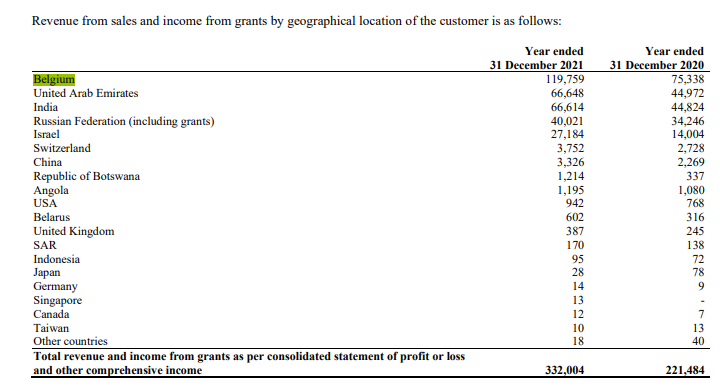
Figures are in millions of roubles. The exchange rate adopted in the Alrosa report was Rb74.3 to the US dollar. The revenue figure for Belgium equates to $1.6 billion. Other company and Belgian data indicate a value iof more than $4 billion. Source: http://old.alrosa.ru/, before the pandemic, the sales revenue figure for Belgium was $100.4 million; that amounted to 42% of Alrosa’s export value. See: http://old.alrosa.ru/ Dubai was worth much less then; Israel much more. As the war has escalated, the Jewish diamantaires of Israel have been losing business to the Arabs and Indians who dominate the diamond exchange in Dubai. If Antwerp is lost to its Jewish diamantaires, the Arab and Indian takeover will be complete.
In 2015 this is how the EU’s sanctions war against Russia started to threaten the Belgian diamond industry.
For the following seven years, as the war has intensified, the Belgian government under Charles Michel (2014-2019), then De Croo for the past two years, has combined fighting with feinting, enabling the trade to recover from the loss of demand and revenues during the pandemic years, and preserving the Russian diamond business after the start of the Special Military Operation in February. This is how the schemes of work-around and parallel trade have worked quite profitably for everyone involved.
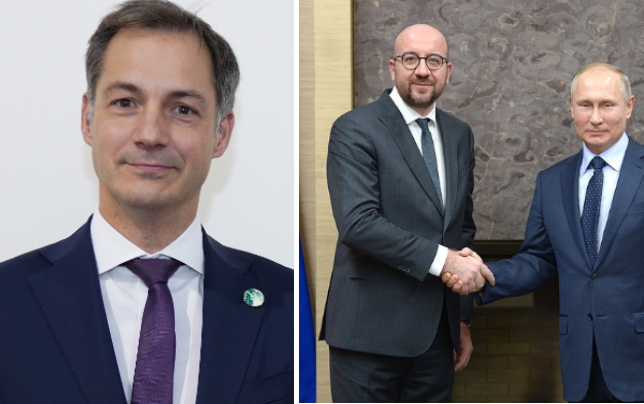
Left: Prime Minister Alexander De Croo. Right: Charles Michel meeting President Vladimir Putin in Moscow on January 31, 2018. Michel was the Belgian Prime Minister at the time. “History has known good and not so good moments in relations between Europe and Russia,” he told Putin.
“However, since we are neighbours, we will always work together. Michel became President of the European Council in 2019; since then he and Putin have held 12 telephone conversations, the most recent three calls since the beginning of the military operation; every one of them was initiated by Putin. Michel has kept significantly better relations with the Kremlin than the German, Ursula von der Leyen, the European Commission President, or Josef Borrell, the Spanish foreign representative of the Commission.
The archive on Alrosa can be followed here. It is a detailed and long one because since 1994 I was the Russia correspondent for the diamond media in the US, UK, Israel, Botswana, South Africa, and Canada.
The US Treasury commenced its sanctions against Alrosa by including it in the debt and equity restrictions of February 24 of this year. Washington then attacked the company directly on April 22, declaring “these sanctions will continue to apply pressure to key entities that enable and fund Russia’s unprovoked war against Ukraine…These actions, taken with the Department of State and in coordination with our allies and partners, reflect our continued effort to restrict the Kremlin’s access to assets, resources, and sectors of the economy that are essential to supplying and financing Putin’s brutality.” . The privatization of Alrosa has created a free float of 34% of its shares; 33% are held by the Russian government; 25% by the Sakha republic (Yakutia) where most of Russia’s diamonds are mined; and 8% divided between the districts of Sakha where the mines are located. At the time of the US attack, the company had already been sanctioned by Canada, the United Kingdom, New Zealand, and the Bahamas.
Sergei S. Ivanov, Alrosa chief executive since 2017, was personally sanctioned by the US on February 24; he is the surviving son of the senior Kremlin official and former defence minister, Sergei B. Ivanov.
Until that point – until the launch of the Special Military Operation — the company had been reporting optimistically on its prospects for profiting from the recovery of the global diamond market after the impact of the lockdown in China and loss of demand in the US jewellery market.
The market outlook for 2022 — the company reported on March 2 but composed weeks before the military operation began — was for strong demand chasing a decline in supply and causing diamond prices to jump. “In 2021 diamond jewelry hit a new all-time record level reaching $84 bn due to strong consumers activity in all key markets notably in USA and China. Retailers report strong sales in 2021, cite continued positive sentiment from consumers. Cutters and polishers enjoy strong demand for polished, healthy profitability, improved balance sheet. Though in 2022 availability of rough diamonds is their key concern. Miners exhausted diamonds stocks in 9M’21, starting from H2’21 supply comes from production only. Global diamonds production in 2022 to reach 110-120 m cts, a 15-20% drop vs 2021 total rough diamond demand… In 2021 ALROSA diamond prices grew +33% from Jan’21 through Dec’21. Diamond prices will be playing an important role in fixing rough diamond shortage amidst healthy diamond jewelry demand.”
Alrosa said it was not expecting US or EU sanctions against the diamond trade. “No further diamonds supply upside risks are expected.” In a postscript attached to the company’s audited financial report for 2021 it said: “A number of sanctions have been announced to restrict Russian entities from having access to the Euro and US$ financial markets including removing access to the international SWIFT system and in such a situation this could further complicate the Group’s ability to transfer or receive funds. Though it is not possible for management to predict with any degree of certainty the impact of all this uncertainty on the future operations of the Group, the Group continues to run business as usual, and service its obligations.”
These tables from Alrosa’s March 2022 presentation illustrate the recovery of sales in 2021, not only compared to the pandemic year of 2020, but to the sales result in 2019. Diamond stocks fell sharply as demand in the biggest of the diamond-consuming markets, China and the US, pushed Alrosa’s exports upward. Earnings (Ebitda) grew, and the company debt declined. Before the US acted to sanction Alrosa, the company was already gaining in profit from higher diamond sale prices due to burgeoning consumer demand and shrinking stocks. Between 2020 and 2021, recorded profit tripled in value.
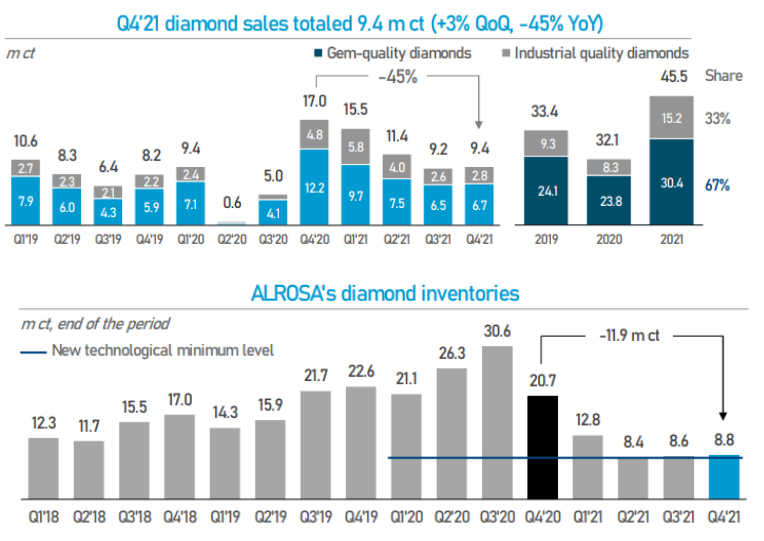
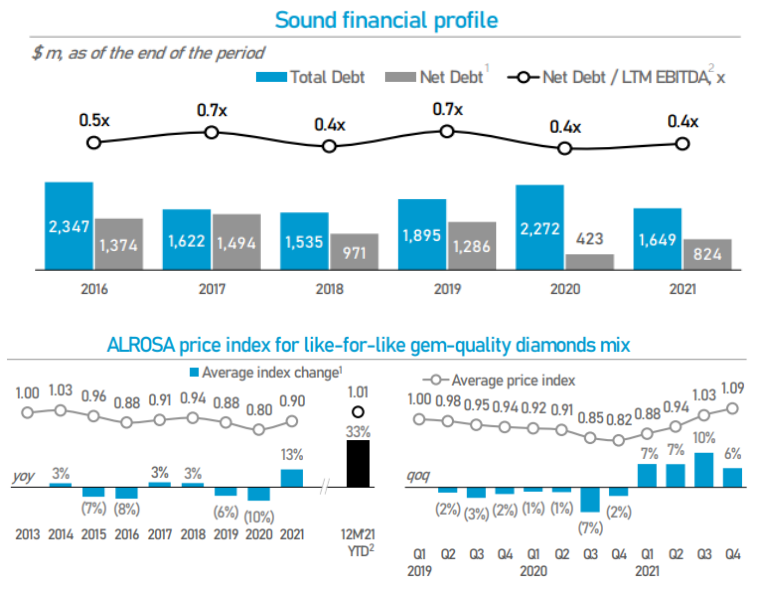
Source: https://alrosa.ru/
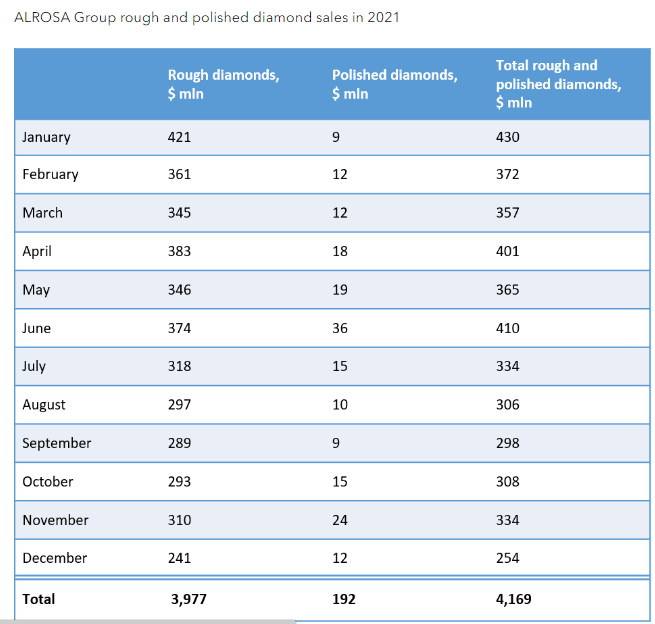
Source: https://alrosa.ru/
By comparison, De Beers, the main international rival for Alrosa, has reported diamond sales of $4.04 billion in 2019, $2.8 billion in 2020; $4.8 billion in 2021.
The immediate effect of the US sanctions, and the Polish effort to strike with EU sanctions, has been to further restrict supplies to the market, and push prices up higher and faster. The company has announced that it is converting its sales and repayment of bond coupons to roubles or rupees. It has also halted public disclosure of its production and sales results, and inventory levels. The war has returned Alrosa into the secrecy in which it operated in 1994.
Rapnet, the diamond industry price setter in New York and Israel, is reporting: “While the sanctions on Russian goods have not yet caused notable polished scarcities, shortages are likely in the coming months. Rough supply has dropped since Alrosa canceled its March and April sales. Prices at rough auctions have increased — particularly in the small-diamond category, which Alrosa dominates. De Beers raised prices of small rough at its latest sight from June 6 to 10.”
“The market is splitting into two segments: Russian and non-Russian goods. Some big cutters are finding ways to buy Alrosa rough in order to serve centers that remain open to buying Russian-origin polished. These diamonds will likely sell at a discount to non-sanctioned ones. US and European jewelers and brands may have difficulty filling their sourcing requirements in the coming months without Russian supply. This will lend further support to diamond prices.”
“For manufacturers, the biggest factor in the downturn was a sharp drop in demand in China, which still maintains restrictions related to Covid-19. Given the quarantine requirements for arriving foreigners, suppliers do not want to visit the country, and Chinese buyers do not travel abroad. The same applies to Hong Kong, although the precautions there are not so strict and are gradually being relaxed. China’s retail sector has also slowed. A recent update provided by the two largest jewelry companies in the region, Chow Tai Fook and Luk Fook, showed that their sales at comparable stores in mainland China for the quarter ended June 30 [2022] fell by 19% and 28%, respectively. As a result, these large buyers have significantly reduced their orders.”
“Indian suppliers, of course, are closely watching the United States, the largest market for them, amid all the talk about recession and inflation. But even though they report a general drop in orders, the US remains a stable market, even if trade in this country does not match last year’s level. U.S. retail trade weakened as Signet Jewelers, the country’s largest specialty jewelry company, lowered its annual forecast. According to Rapaport reports, the company expects revenue of $1.75 billion in the second quarter of the fiscal year ended July 31, which is 2.1% less than last year.”
“In July, we saw a decline in sales as our customers were increasingly impacted by rapidly rising inflation, so we are revising our targets to match these trends,” CEO Gina Drosos said in early August. Major diamond producers are concerned about a drop in orders from the United States in the current quarter. But the US continues to support the market, and there is some hope that it will stabilize by the holiday season.”
On September 17, Bloomberg reported that the parallel diamond trade was “fracturing the global trade that stretches from cutting factories in Mumbai to luxury stores on New York’s Fifth Avenue…Many in the industry refuse to deal in Russian gems following the invasion of Ukraine and after mining giant Alrosa PJSC was hit with US sanctions. But there’s a handful of Indian and Belgian buyers who are snapping up large volumes at lucrative terms, getting to pick and choose the diamonds they need while others stay away. The deals are happening quietly, even for the famously secretive diamond world. And while they’re not breaching sanctions, there are other risks to consider — heavyweights like Tiffany & Co. and Signet Jewelers Ltd. don’t want Russian diamonds that were mined since the war began, and suppliers say they are worried about losing crucial contracts by dealing in Alrosa gems.”
Vladimir Malakhov, editor of the Russian diamond industry bible, Rough-Polished.com, was asked how much had sanctions affected the export of Russian diamonds; what gain in market share De Beers had made at Alrosa’s expense; and how the parallel trade schemes were operating to compensate. “Unfortunately,” he replied, “I do not comment on what is happening in the industry.” Read more in the publication. No Russian analyst covering the diamond industry, Alrosa and De Beers will talk at the moment, on or off the record.
“There seem to be quite a few errors in the Bloomberg article about Russia, India and the diamond market generally,” responded a leading international diamantaire. Israeli and American diamond industry sources acknowledge that they have been anticipating that Alrosa would continue selling through Dubai and resist the price discounting pressure from India. The problem is, however, that the banks financing the trade in India, the United Arab Emirates, and Hong Kong, as well as in Antwerp, have come under US pressure to stop or risk losing much more of their business than their diamond financing.
In Vienna, a source acknowledges that “a major Austrian bank of dubious repute, which used to handle a lot of Russian diamond transfers, stopped completely a few months ago.” A Chinese source adds: “No one wants to bank through Hong Kong any more for obvious reasons. Only Indian banks manage to arrange some payments, and India direct seems to be the only outlet for Russian rough.”
In the short term this means that in what was already a market in which demand was weakening, rough prices falling for three months in a row, the sanctions war has put a floor under prices to prevent them falling further; that was expected if more Russian diamonds had been arriving on Alrosa’s plan before April. “Obviously,” comments a South African source, “De Beers is taking advantage of the situation and filling the gaps where they can, and where the market allows.”
In Moscow open source reports indicate that in the month of July diamond imports to India increased by 25% by value, compared to the same month of 2021; for the April-July period, the Indian imports were up 4.5% on 2021. In August Indian imports of rough were up by 12.5% year on year.
Russian diamond export data are now a black hole, and will remain that way. There have been reports from Indian diamantaires that there is a continuing flow of Russian rough into Surat, the Indian diamond cutting centre, though the volume is lower than before February; the price is not discounted. In comments to the press at the Eastern Economic Forum in Vladivostok last month, Alrosa CEO Ivanov (right) said there has been no decision to cut this year’s mine production target of 34 to 35 million
carats nor next year’s production target; no discounting of Alrosa’s export sale prices; and no decision to stockpile unsold diamonds at the state stockpile agency Gokhran in Moscow.
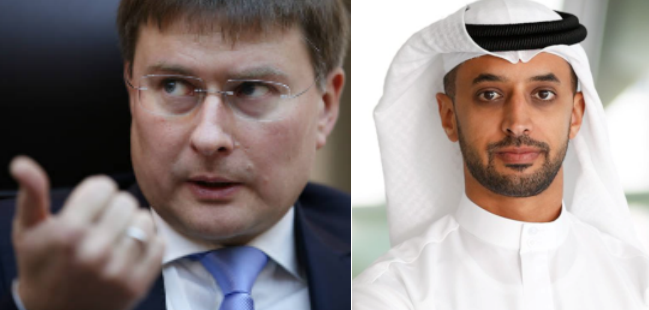
Left, Sergei Ivanov of Alrosa; right, Ahmed bin Sulayem of the Dubai Multi Commodities Centre.
While the Belgians keep trying to talk out of both sides of their mouths, the last word has been said by Ahmed bin Sulayem, the chief executive of the Dubai Multi Commodities Centre. Rejecting Zelensky’s attack on Antwerp, and also “cheap comment” by Belgian diamond industry officials on Dubai, he told Rough & Polished in Moscow: “Twenty years of diamond transparency in Belgium includes a long list of challenges and systemic failures ranging from the Monstrey Case, to the conviction of felon, Agim De Bruycker, a former commissioner of the Antwerp Federal Judicial Police and head of its Diamond Squad. It should also be obvious that if any action is ultimately enforced by the European Commission, it has not and will not be because Dubai lobbied for it to be so.”
“In the same way that sanctions may not have the intended consequences on Russia, neither do ill-informed comments or false media narratives help to protect industries or jobs. Ultimately, healthy competition is fundamental to any industry as a driver for innovation, lower prices as well as higher quality goods and services, however, greater benefits can be found in ’coopetition’, where industry-specific economies work together to create higher standards that benefit the entire supply chain, while remaining resource efficient. While I may not agree with all of Mr. Neys [Antwerp diamond industry spokesman] comments, I agree that sanctions on Belgium’s diamond industry would be ‘a mistake of historic proportions’ and it is my wish for Antwerp to return to full strength and join in not only providing a competitive market, but working with Dubai to drive positive change for the industry’s wider benefit.”
http://johnhelmer.net/diamonds-are-fore ... more-68984
***************
From Cassad's Telegram account:
***
forwarded from
SOLOVIEV
3:20
Andrei Kartapolov, Chairman of the State Duma Defense Committee, Colonel General, on the SolovievLive TV channel
***
Colonelcassad
Acting head of the DPR, Pushilin, said that the situation in the Krasny Liman direction would stabilize, and Krasny Liman would certainly be liberated again.
At the same time, there are reports of a build-up of the AFU grouping both in the Krasnoliman direction and in the area of Kupyansk and Borovaya in preparation for the offensive on Svatovo and Kremennaya.
The Armed Forces of the Russian Federation and the army of the DPR are now strengthening the defense of these cities, as well as strengthening their positions near the Svatovo-Kremennaya highway. It seems that the enemy will avoid a frontal assault on Svatovo and Kremennaya and will rely on breaking through the depleted defenses north of Svatovo, and will also try to cut the Svatovo-Kremennaya road in order to bypass Kremennaya from the north and create a threat to envelop the flank of the RF Armed Forces groups in Kremennaya and Svatovo. The enemy does not have much time left, so before changing the balance of power in the theater of operations, he will try to invest in offensive operations to the maximum in order to occupy as much territory as possible before moving on to defense.
https://t.me/s/boris_rozhin
Google Translator
